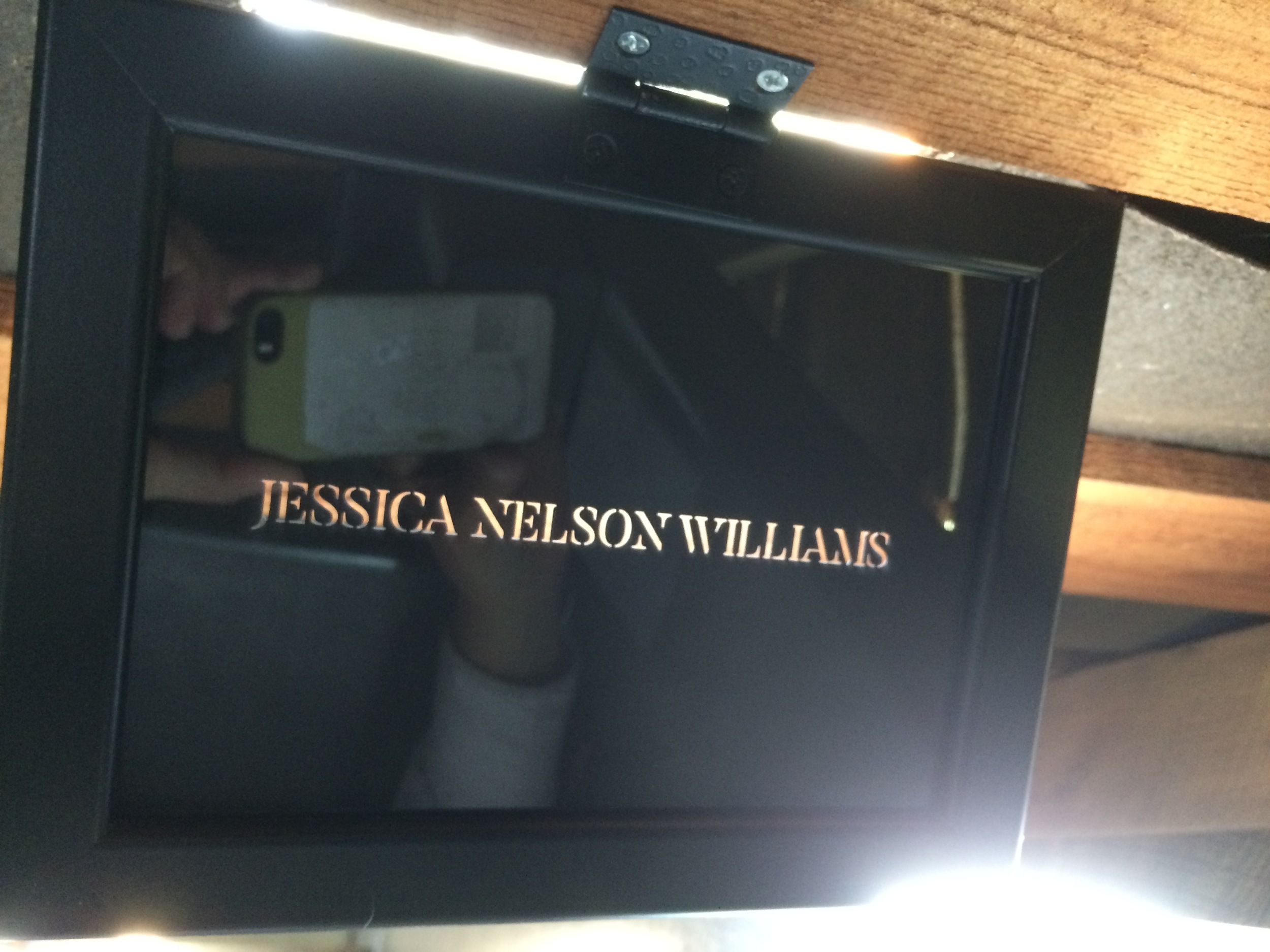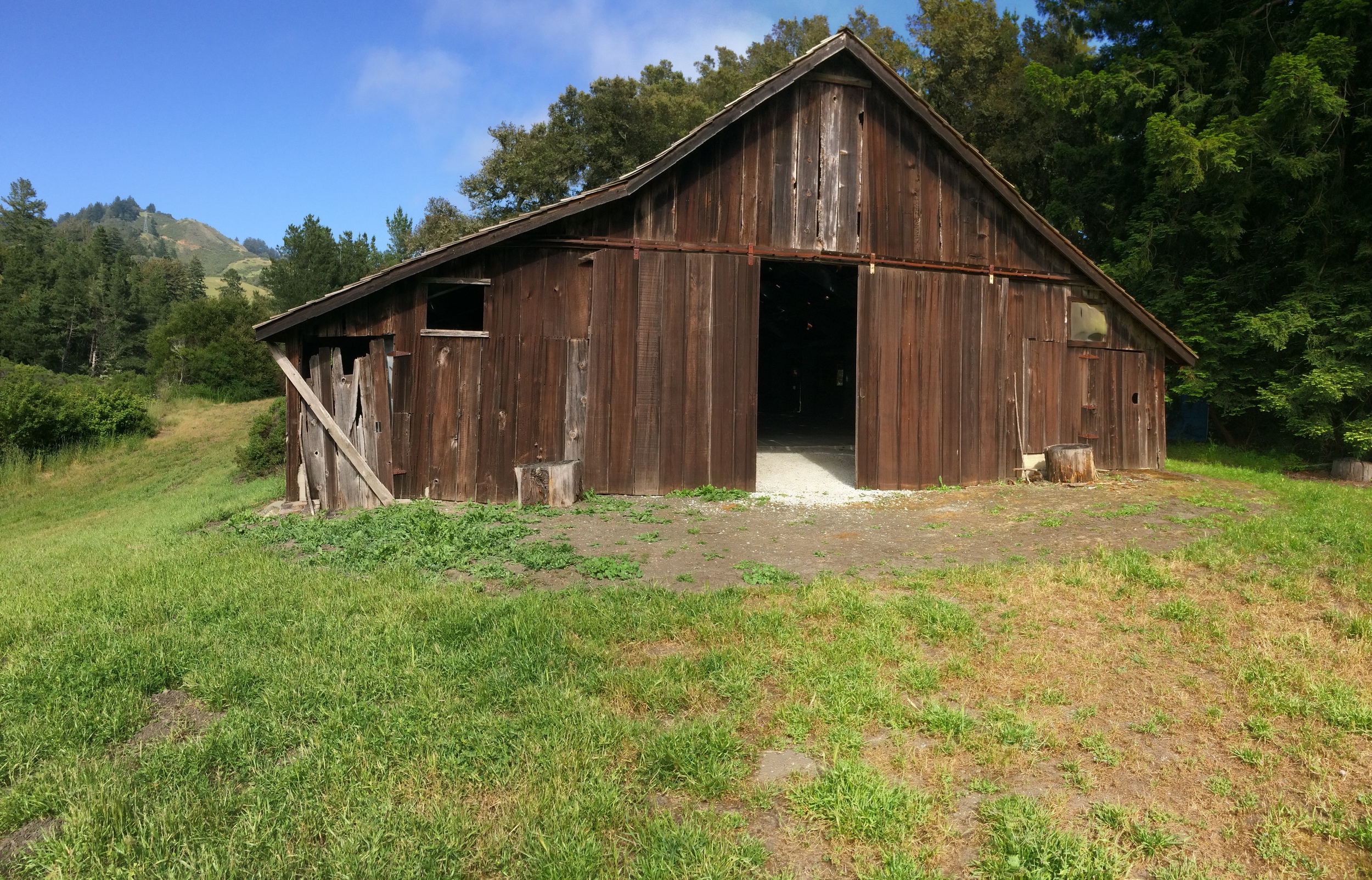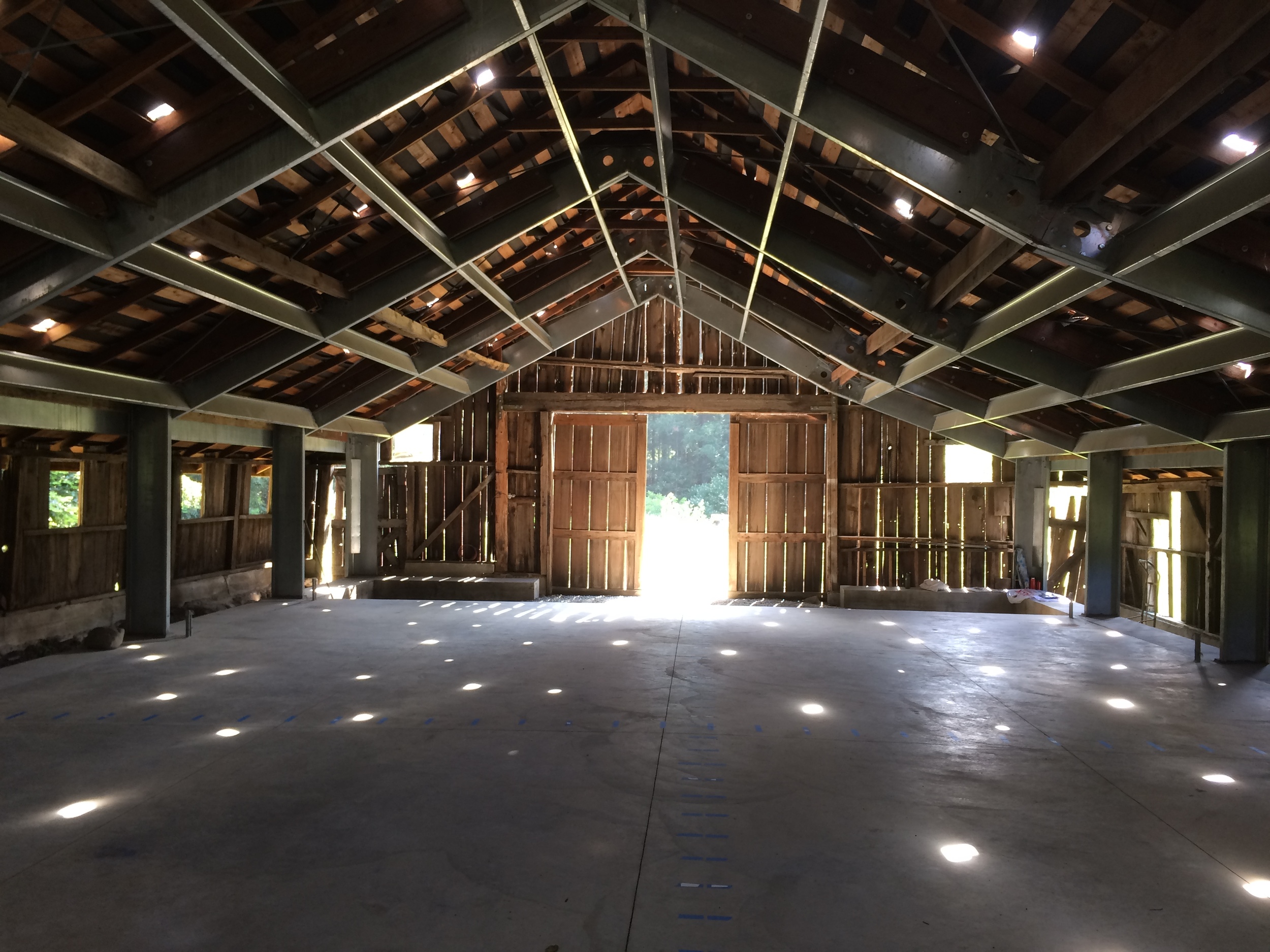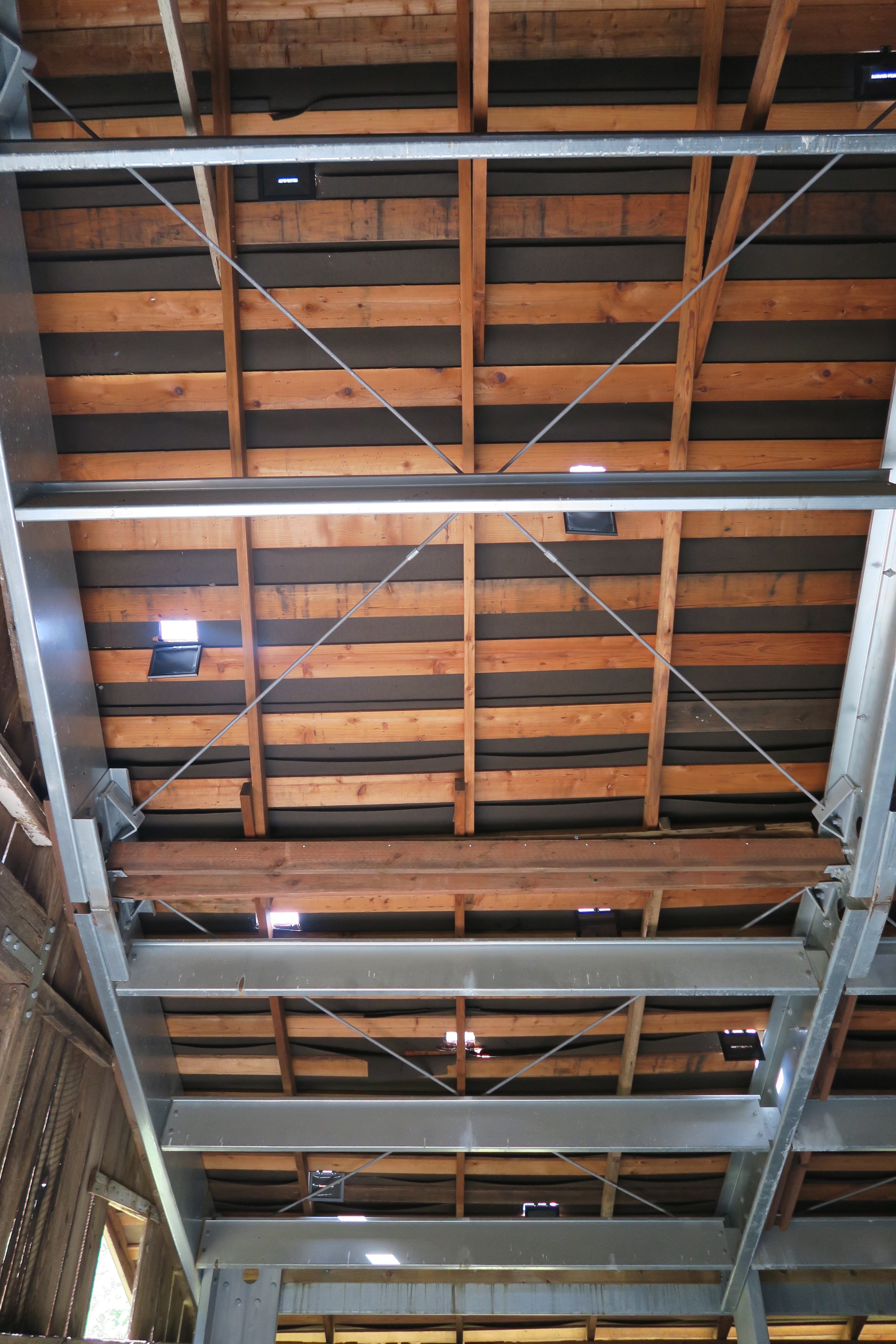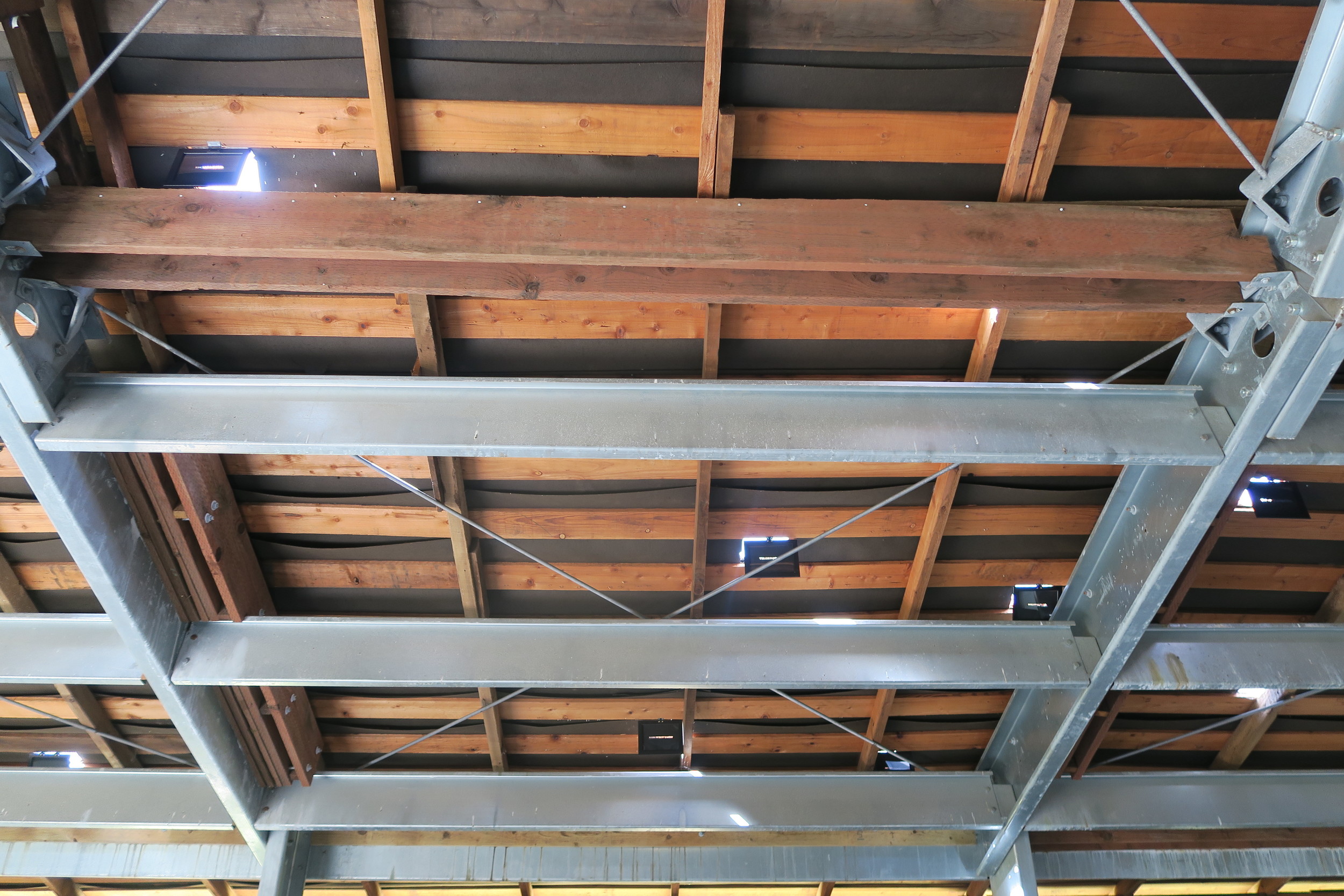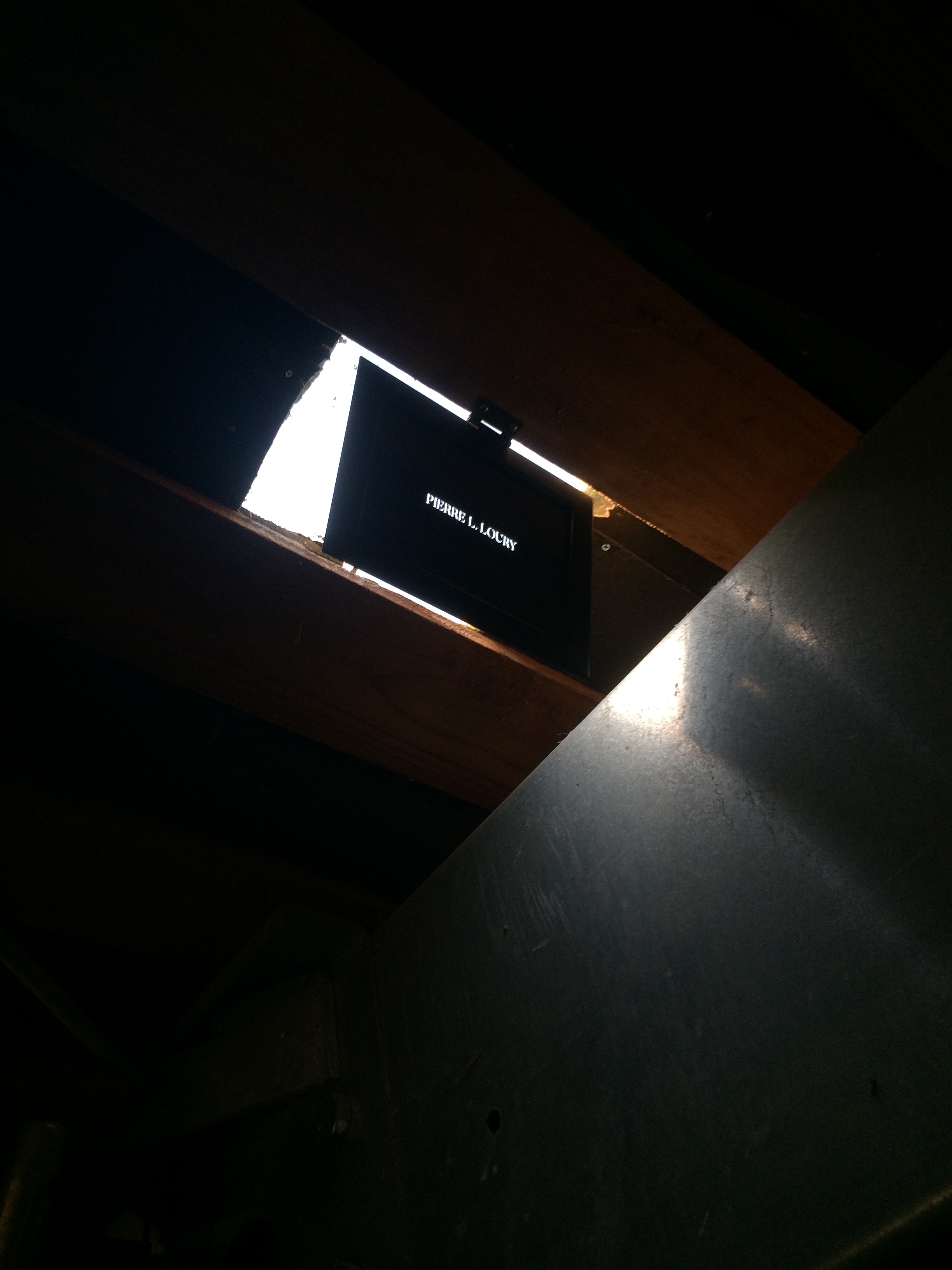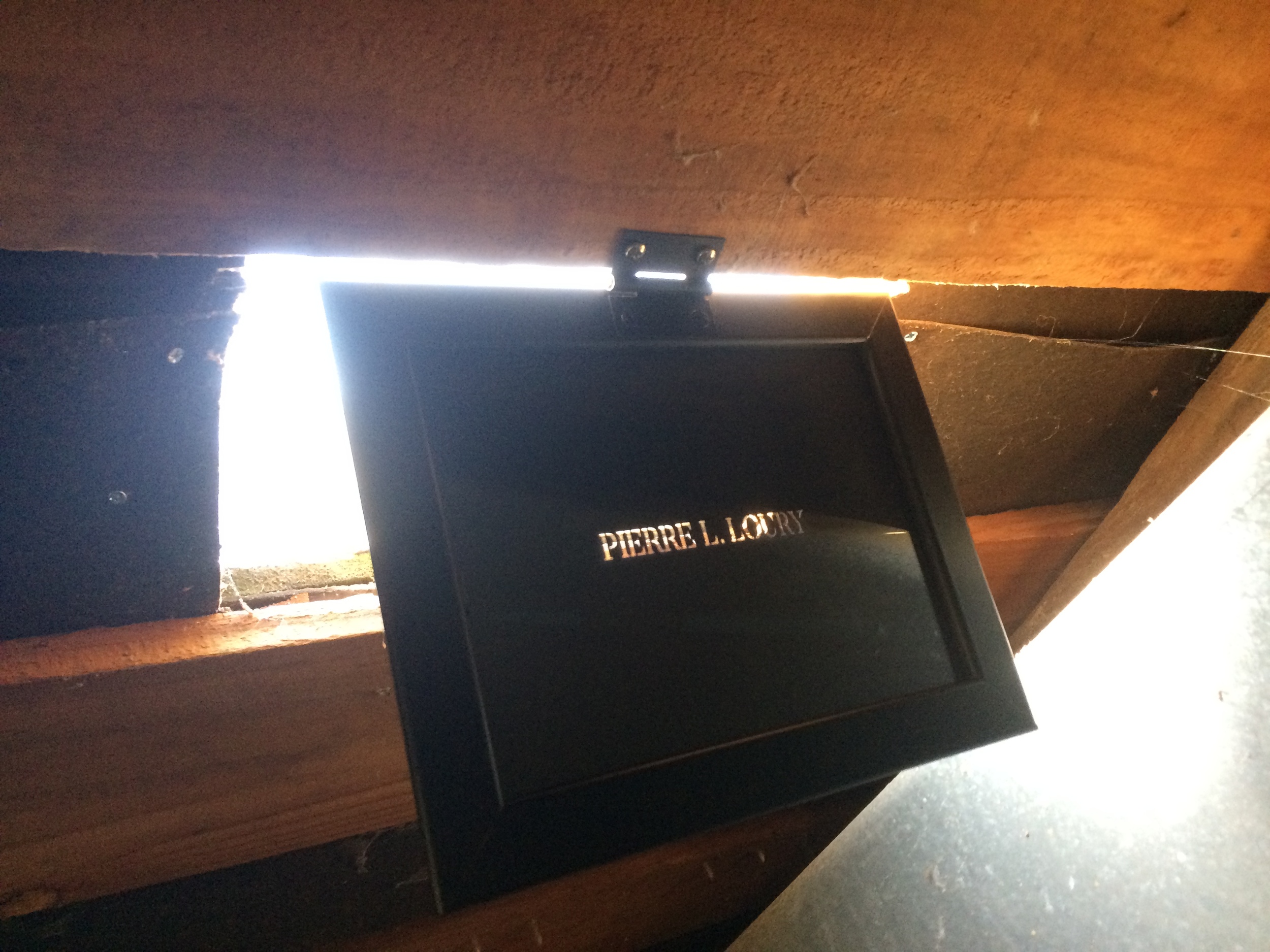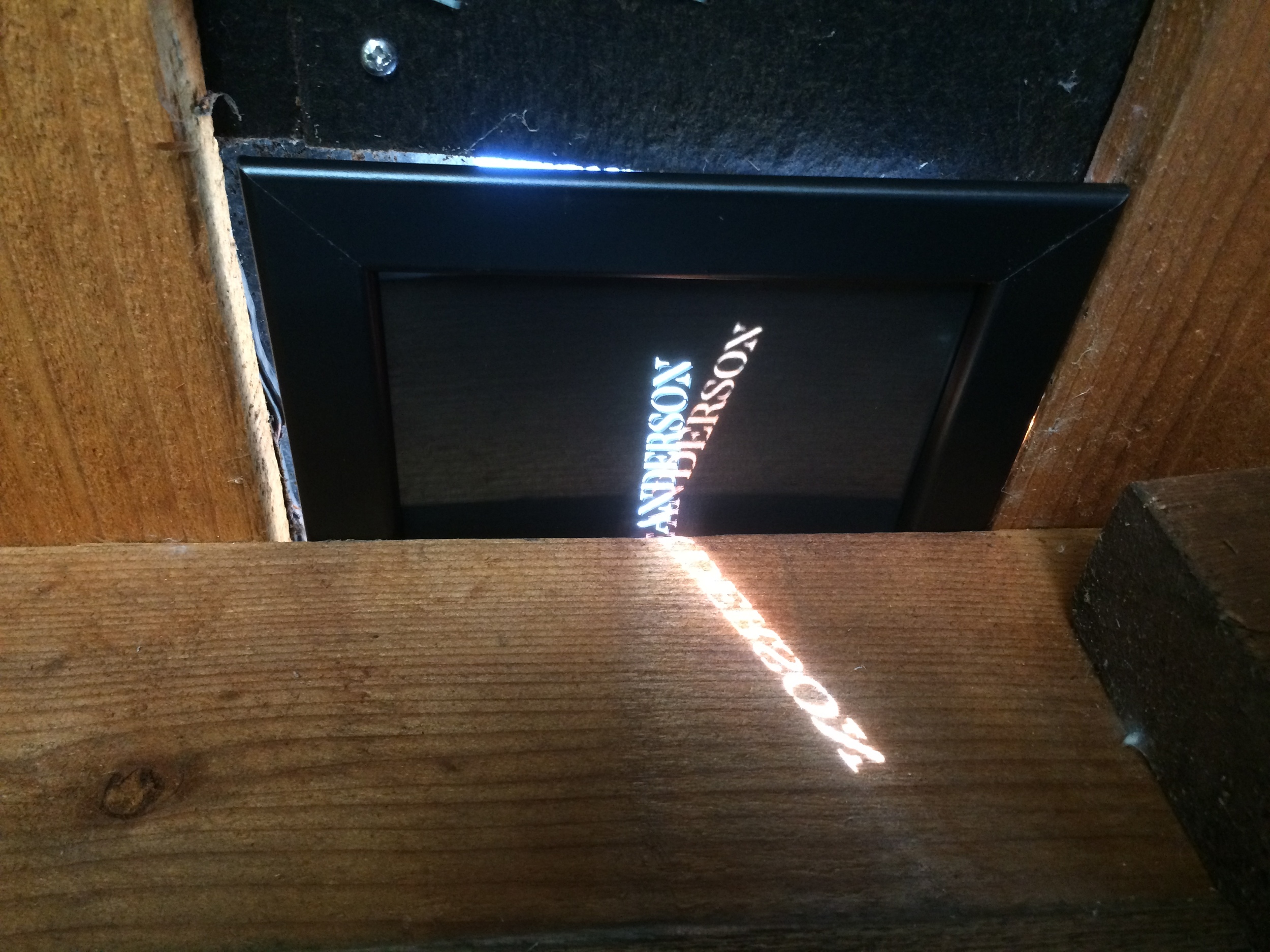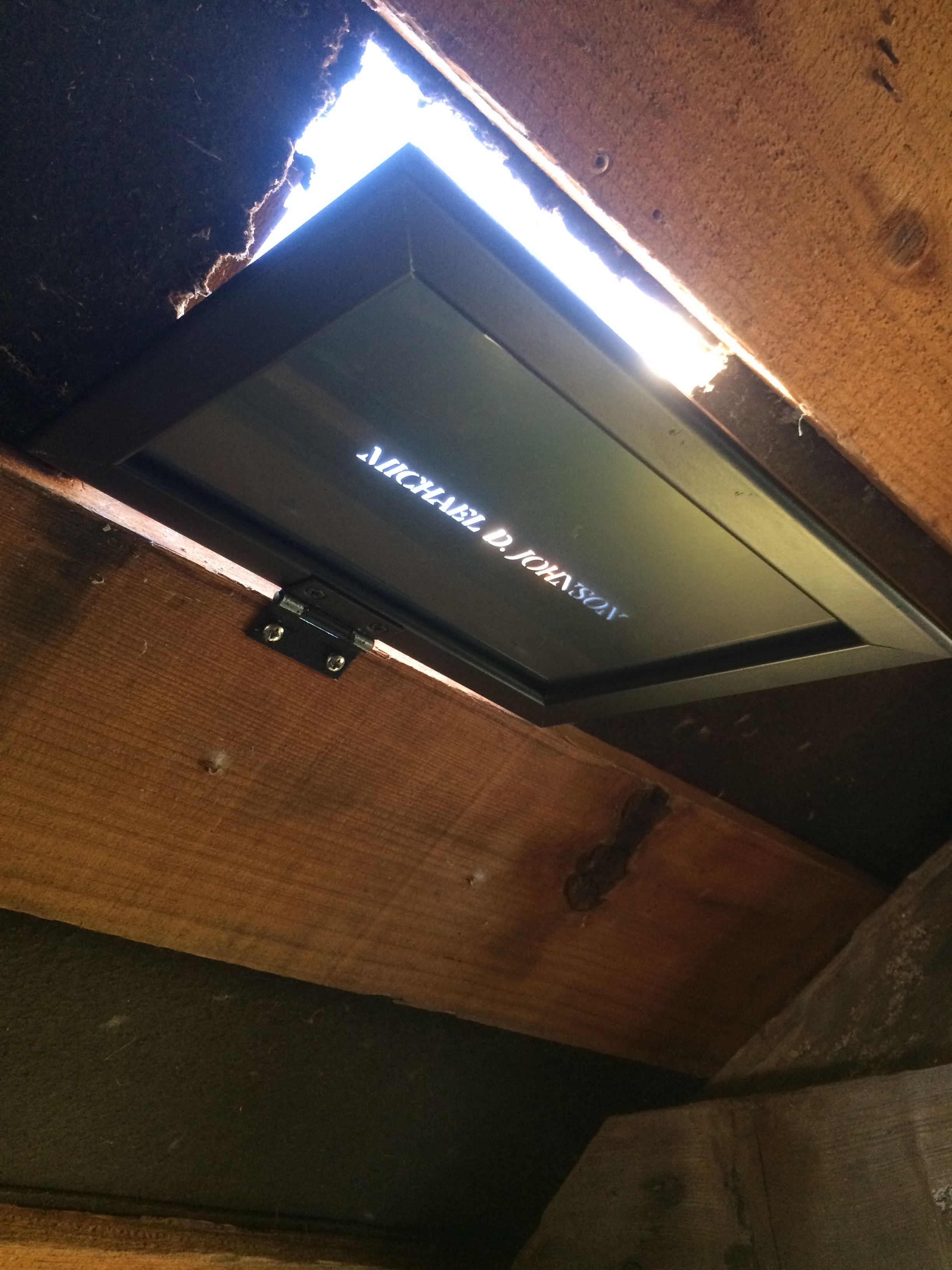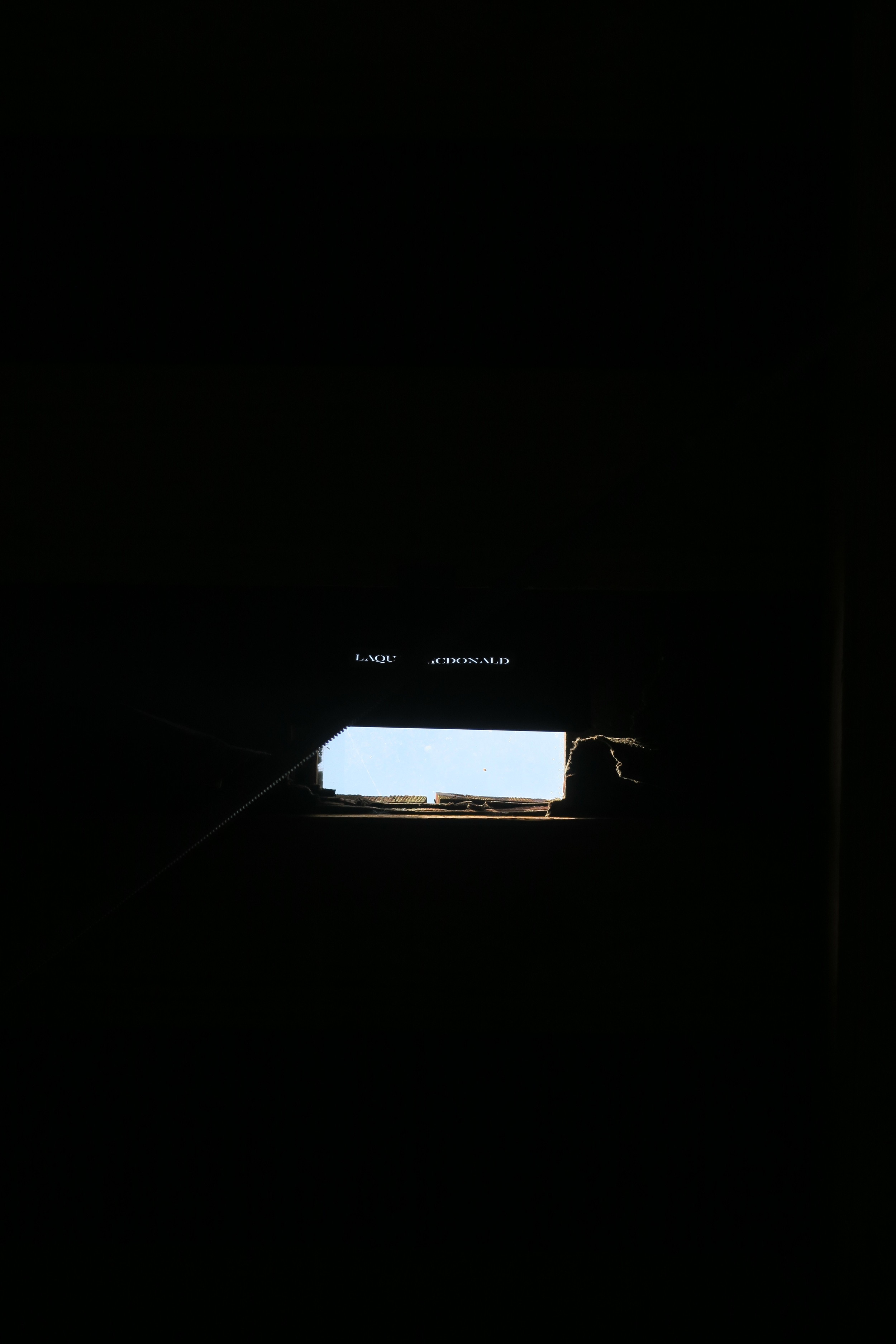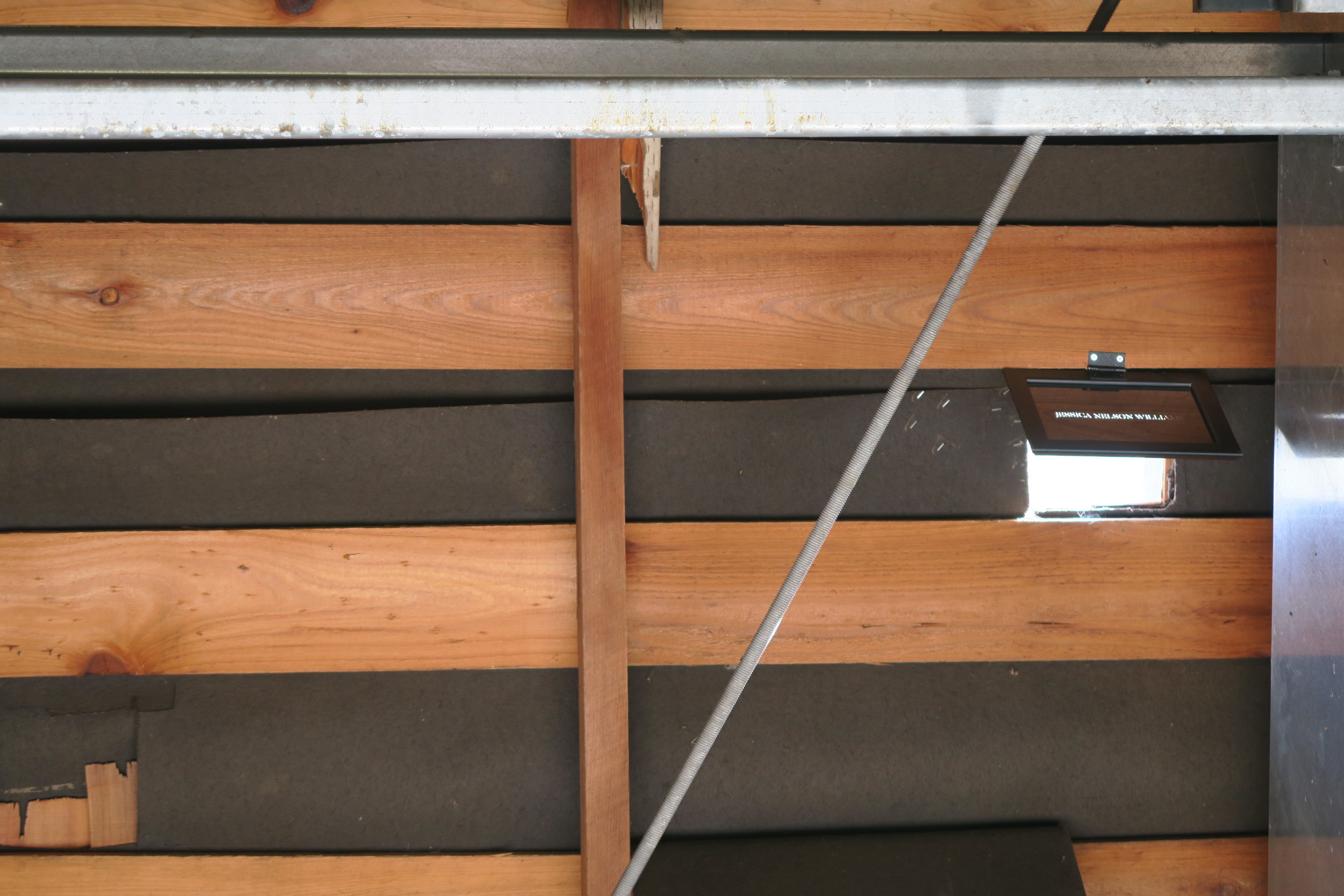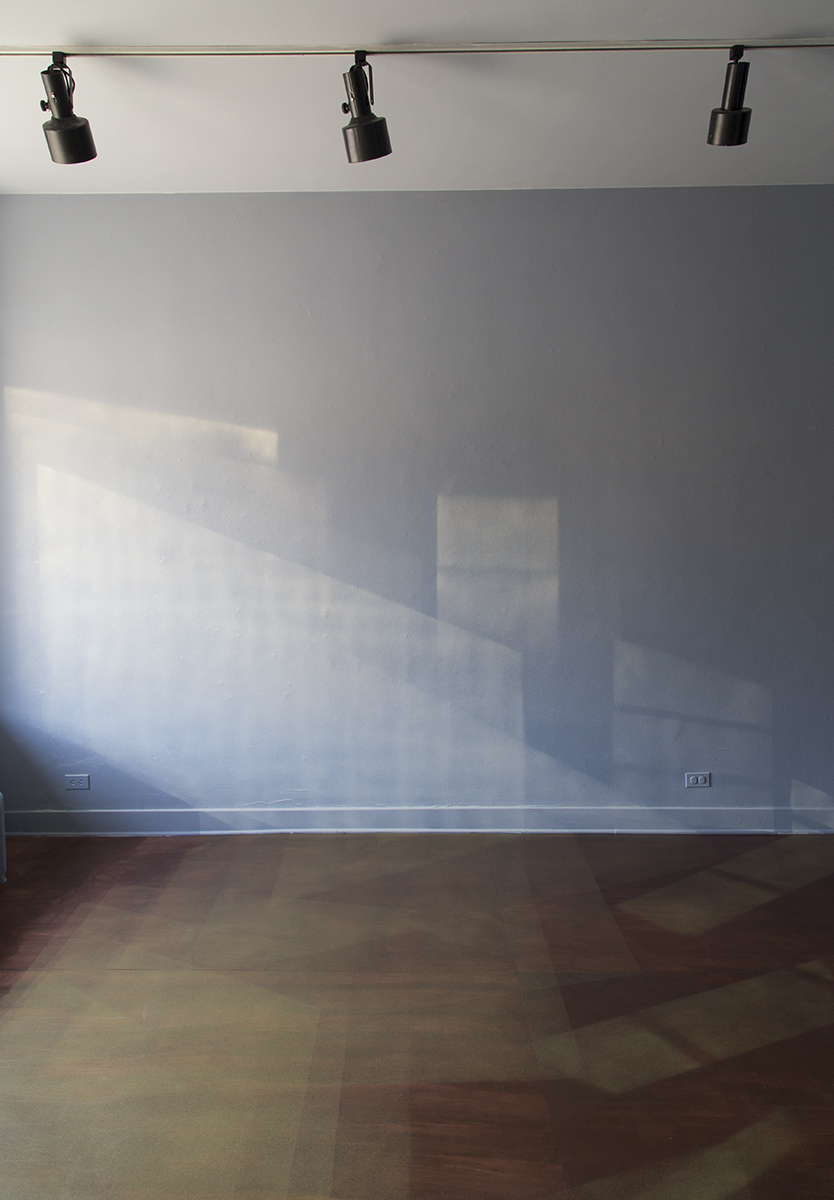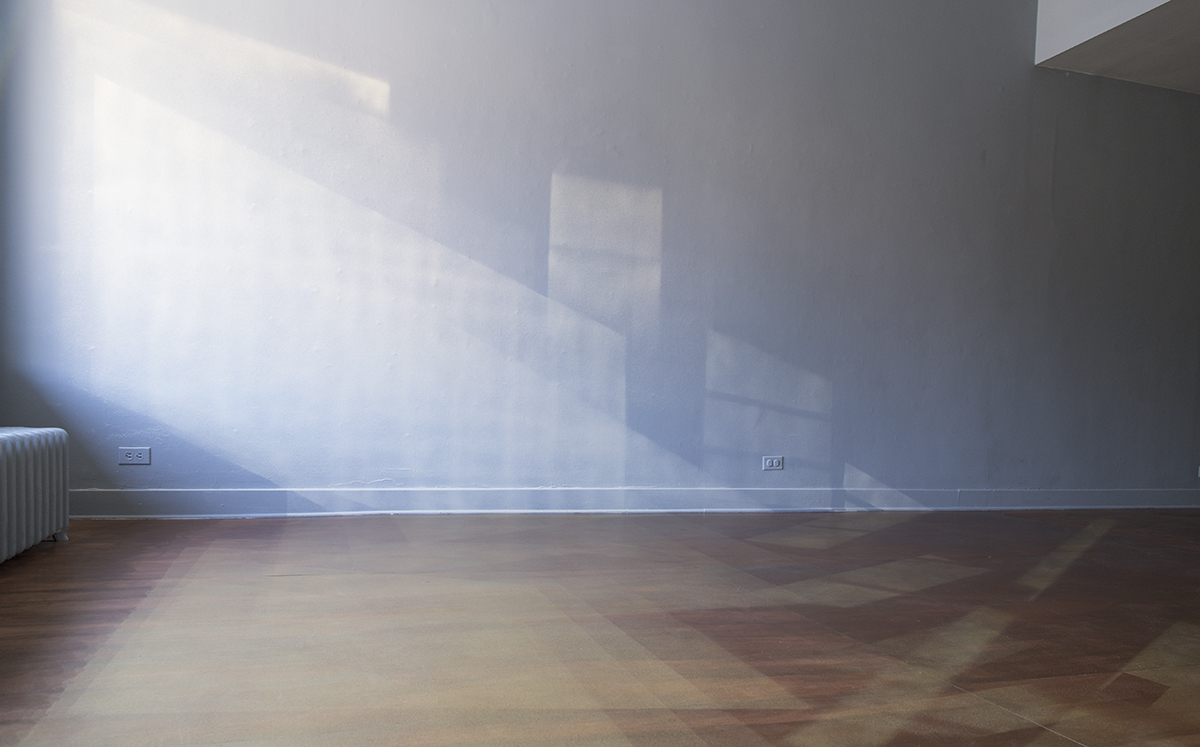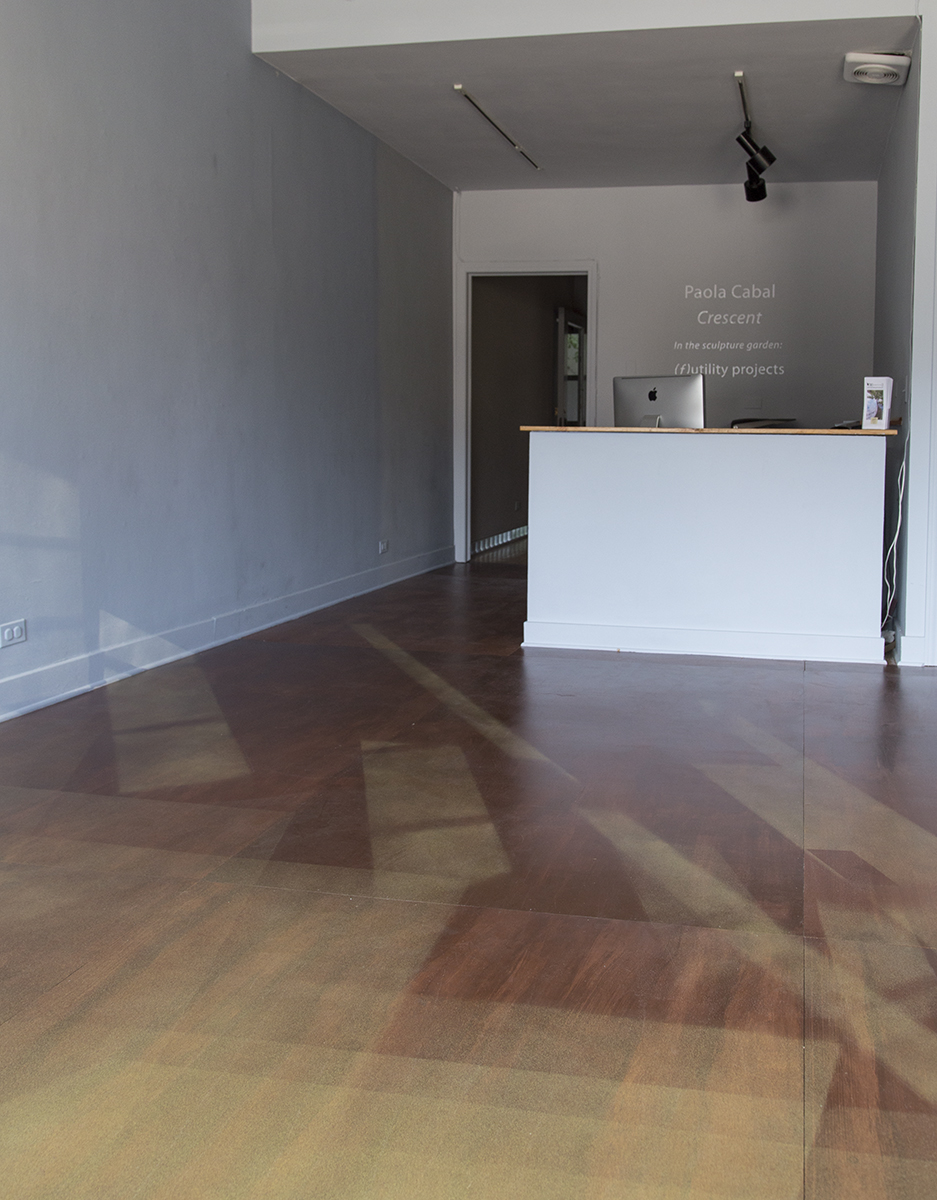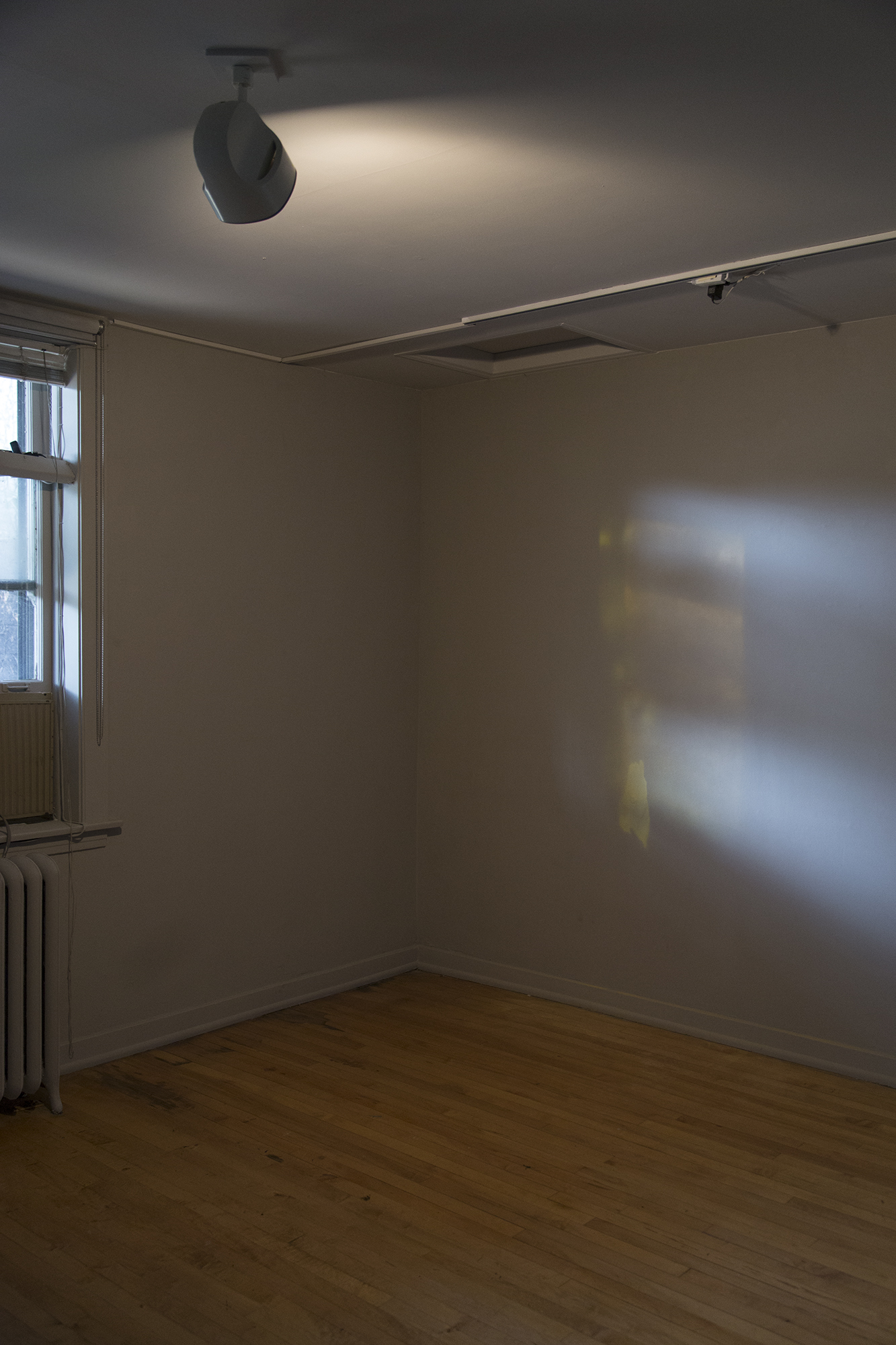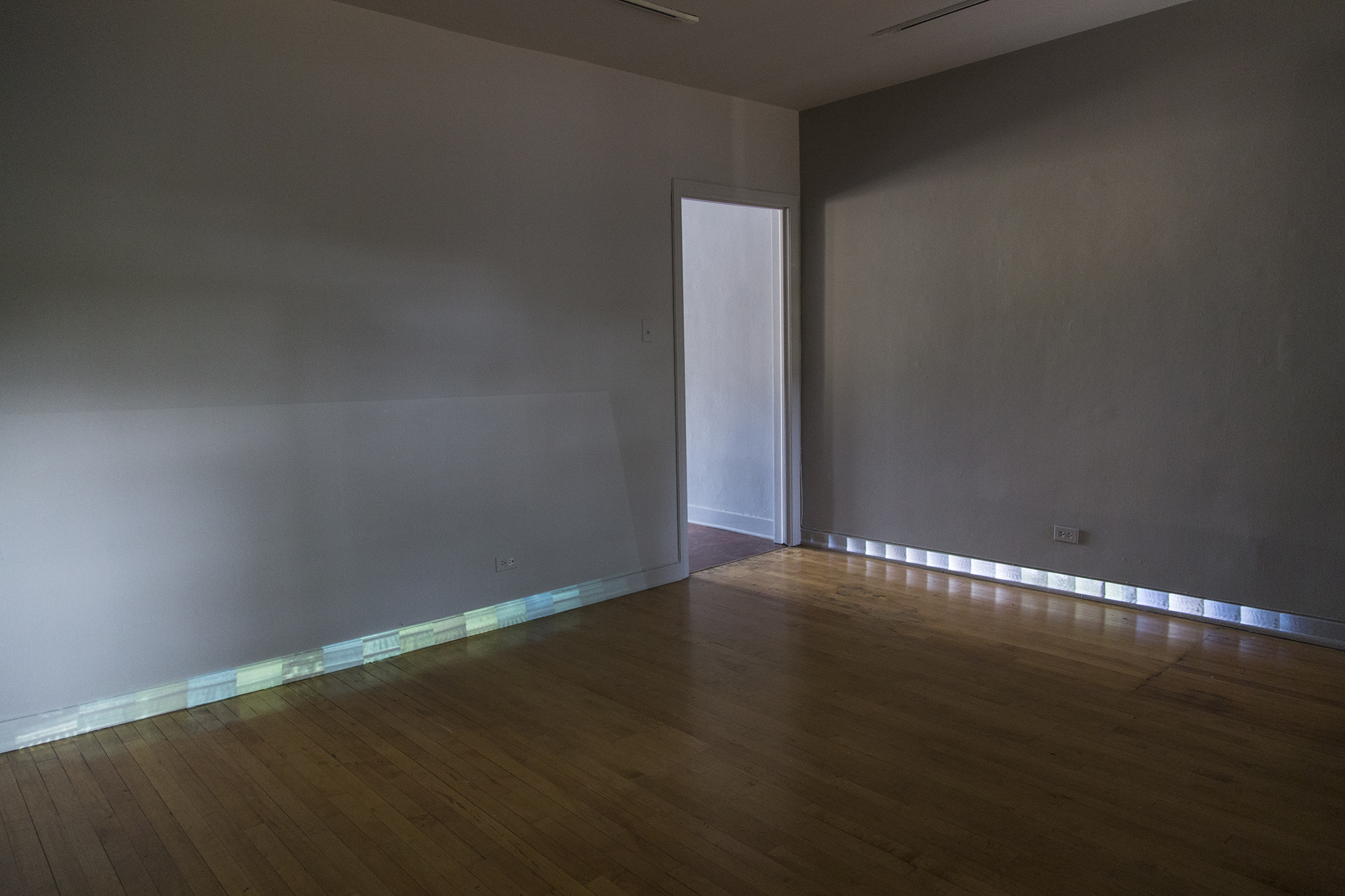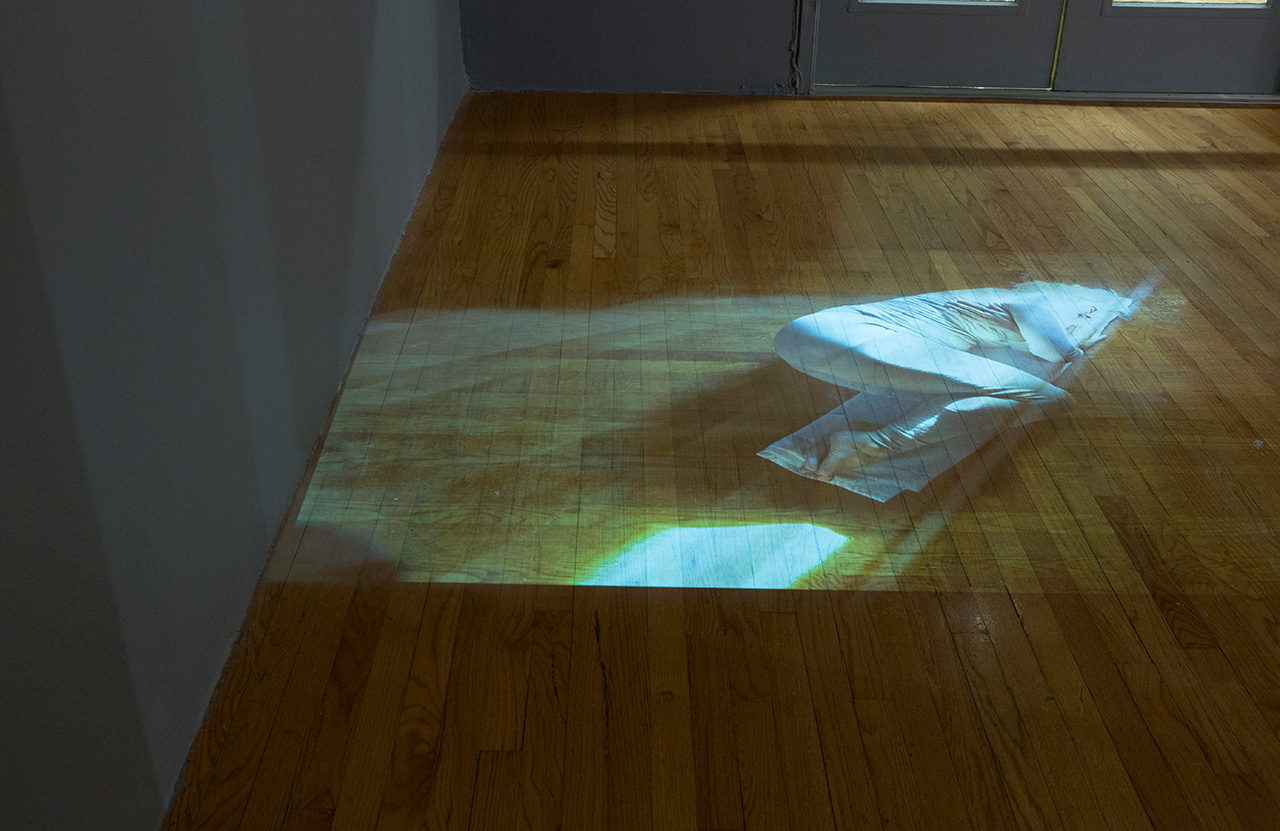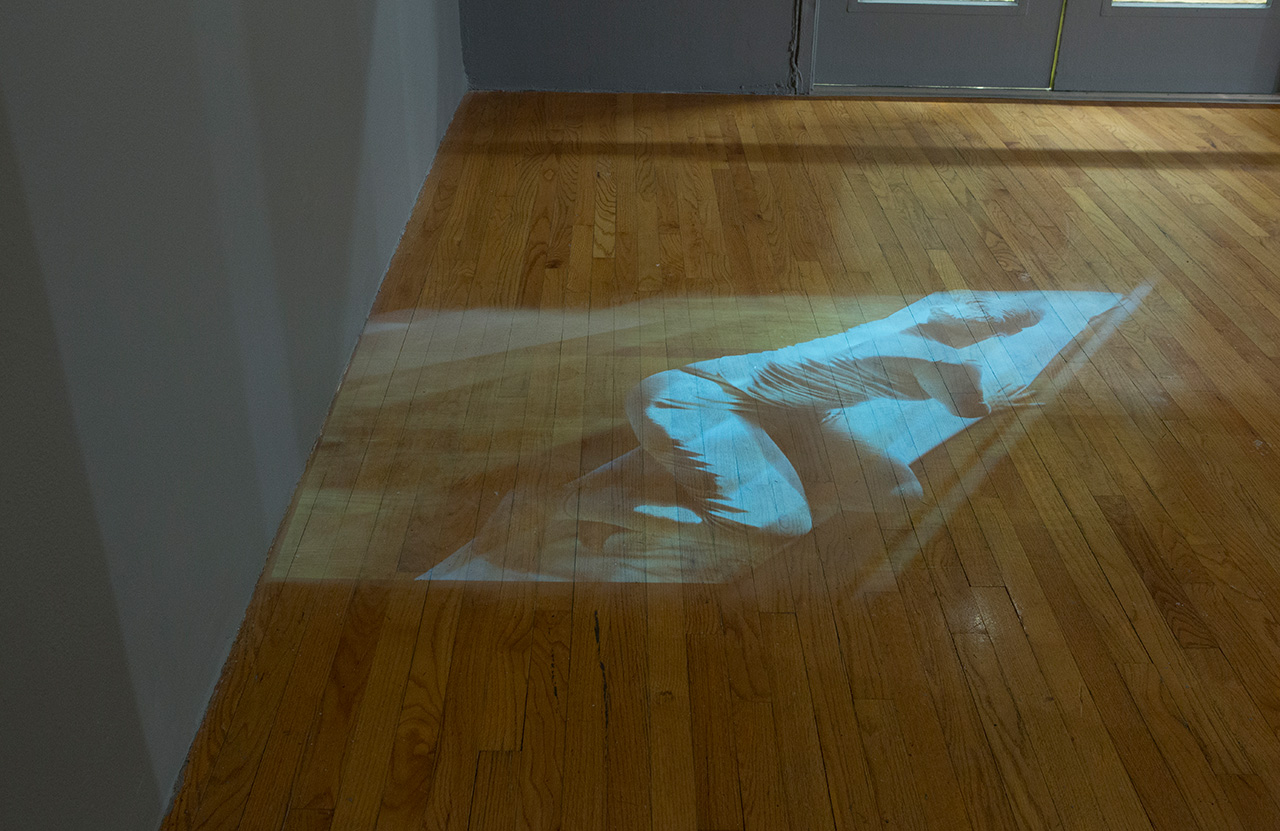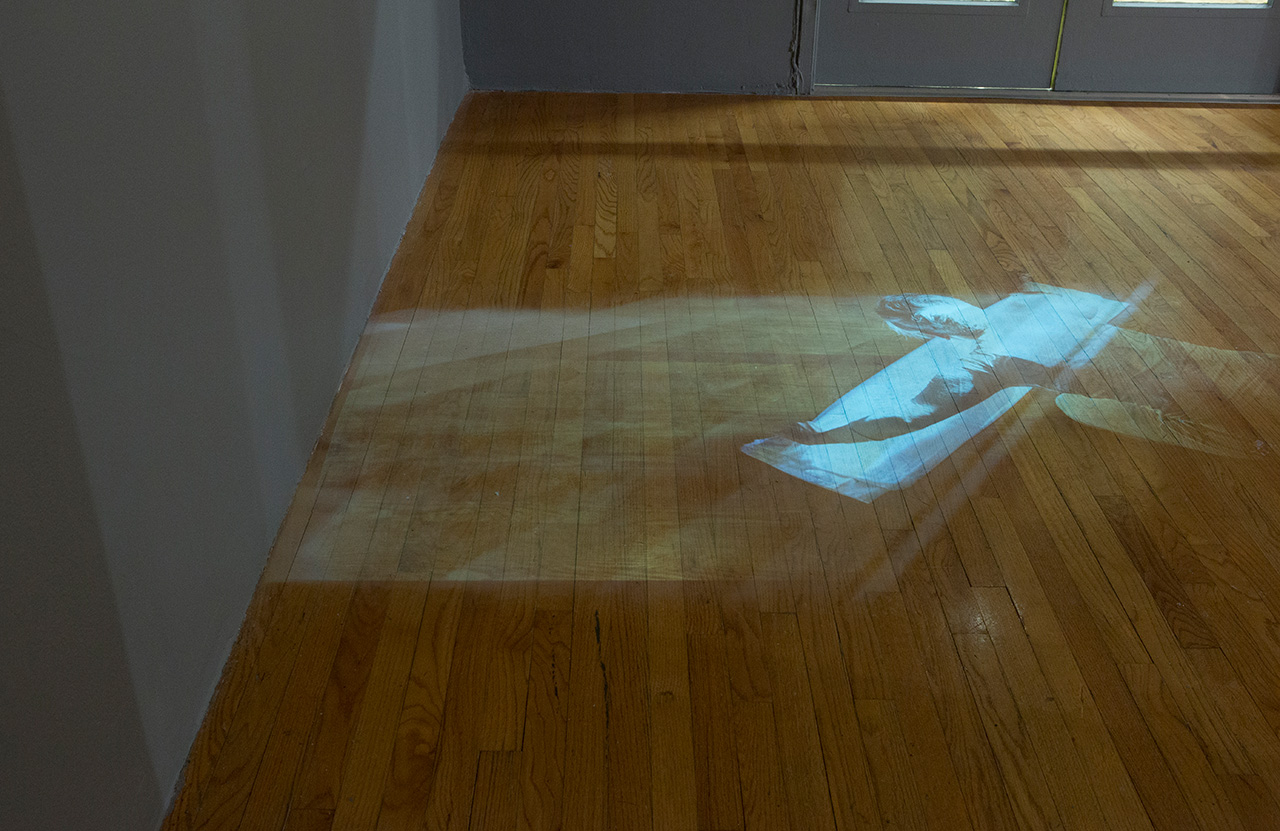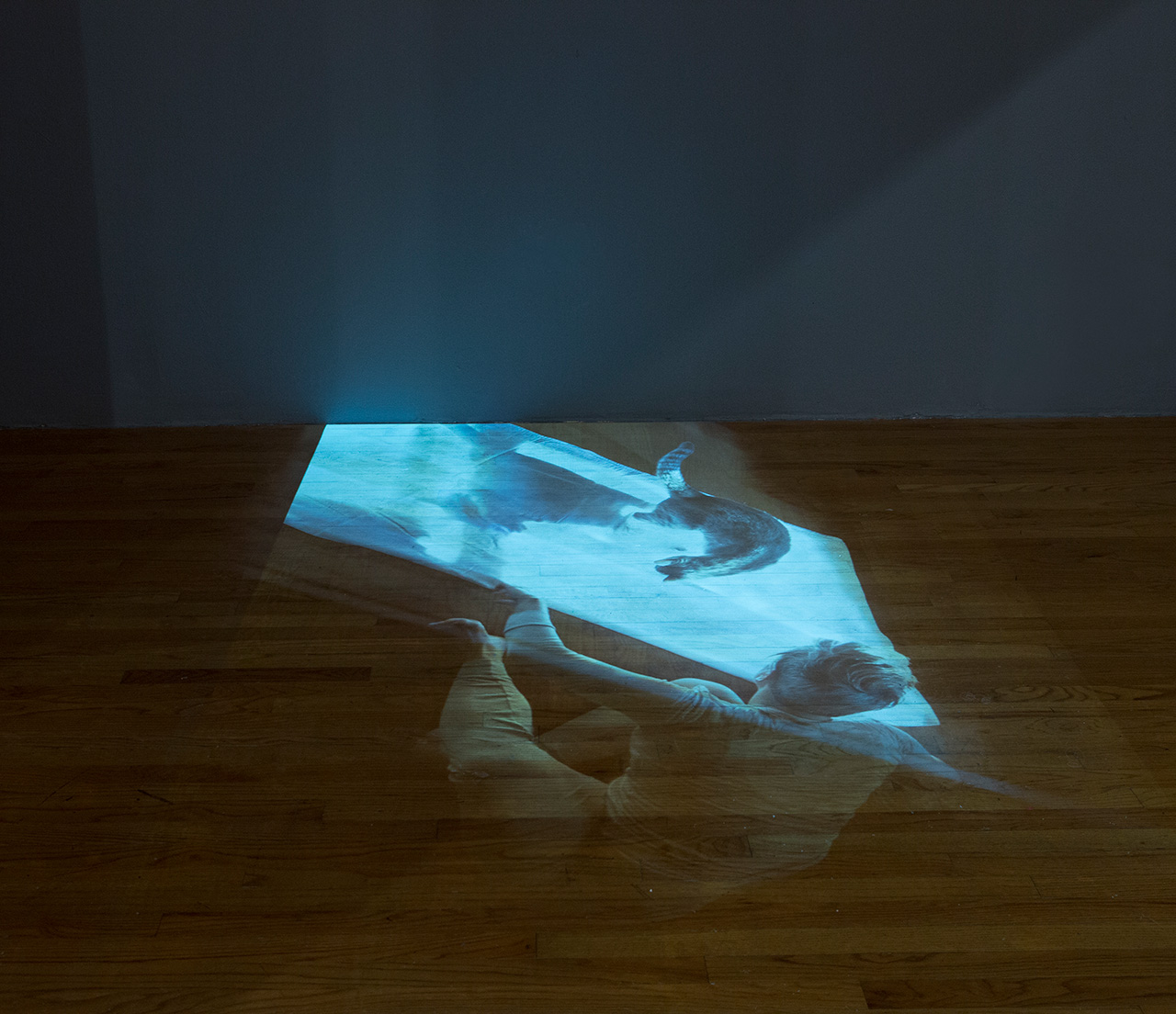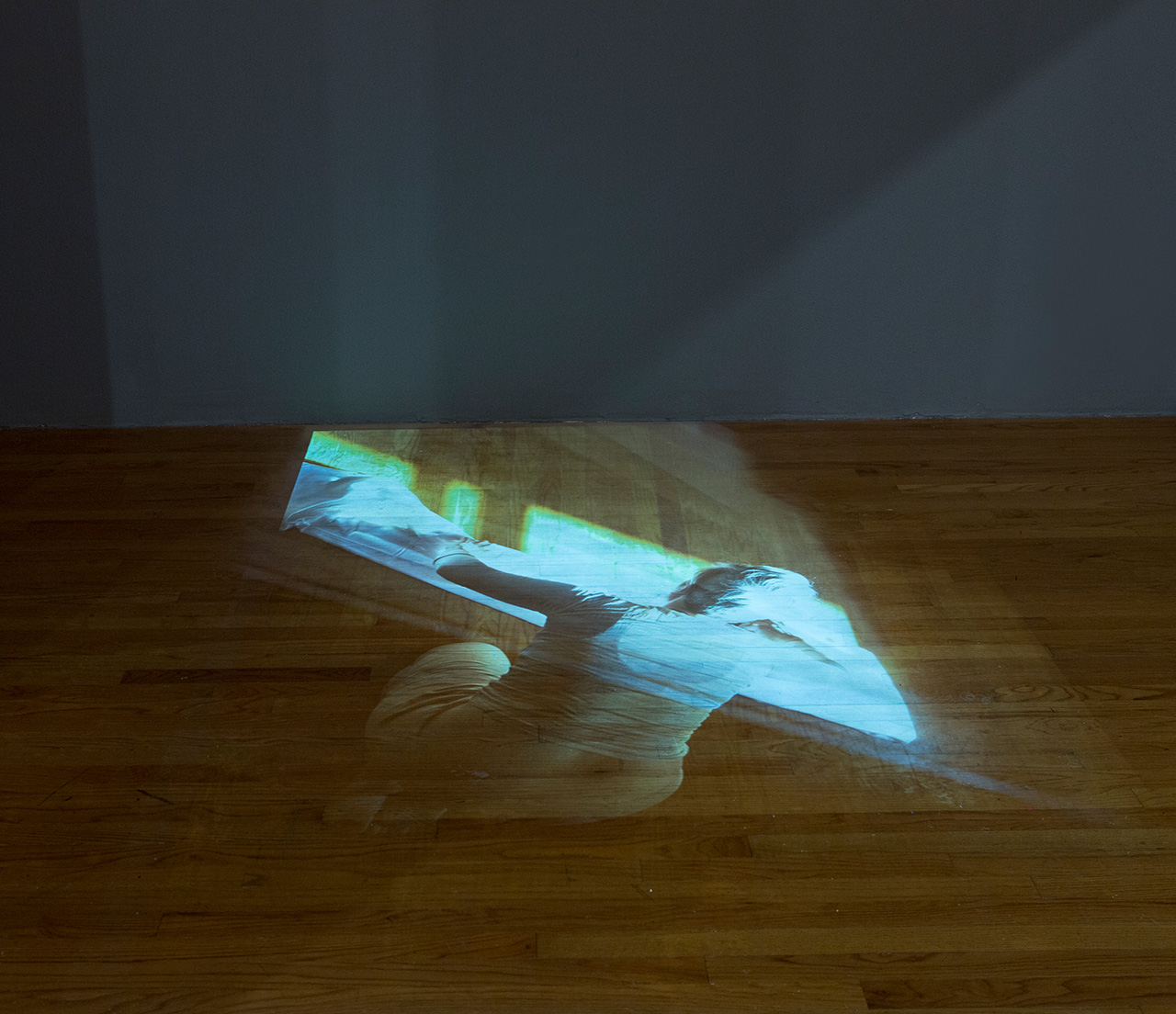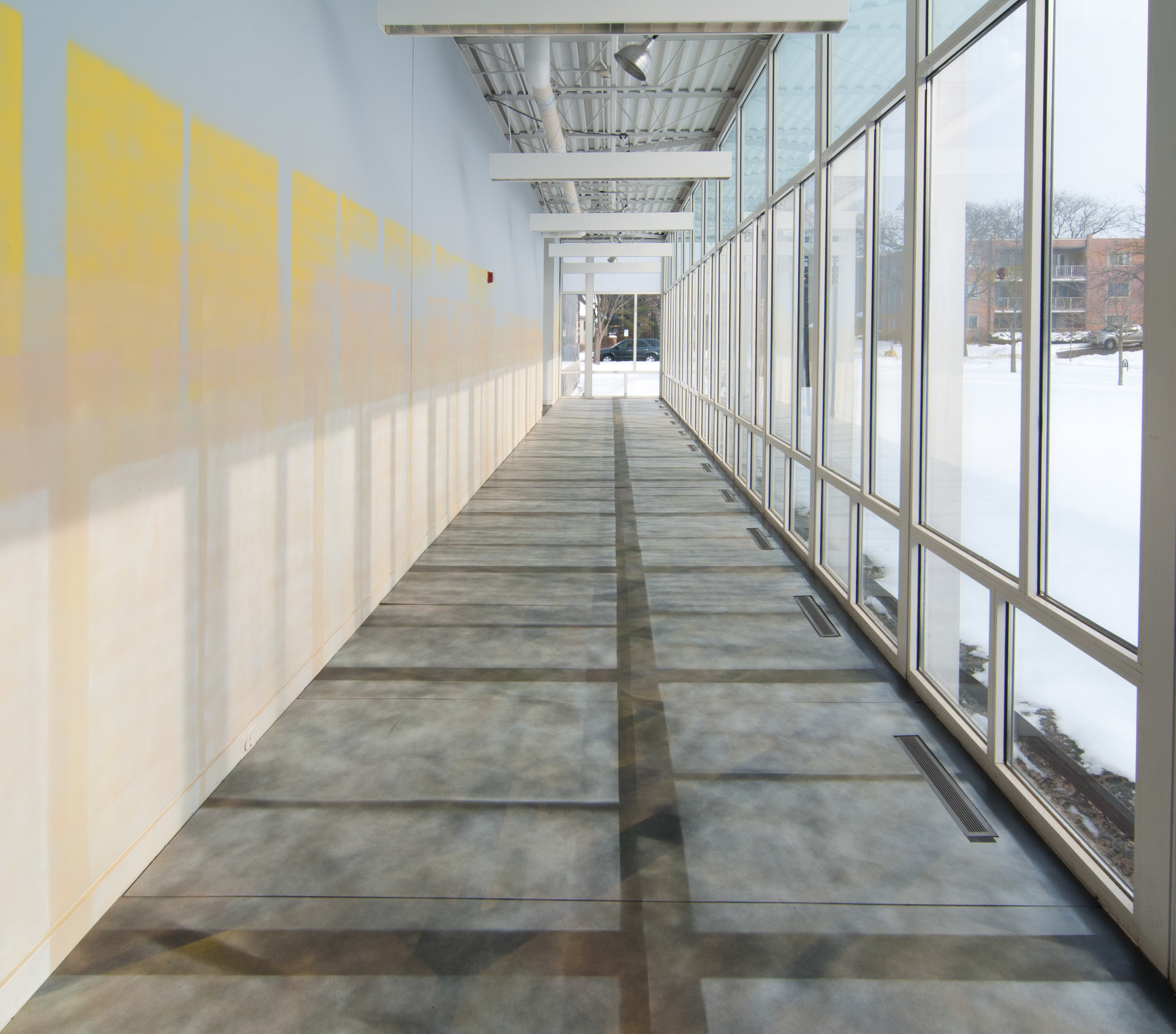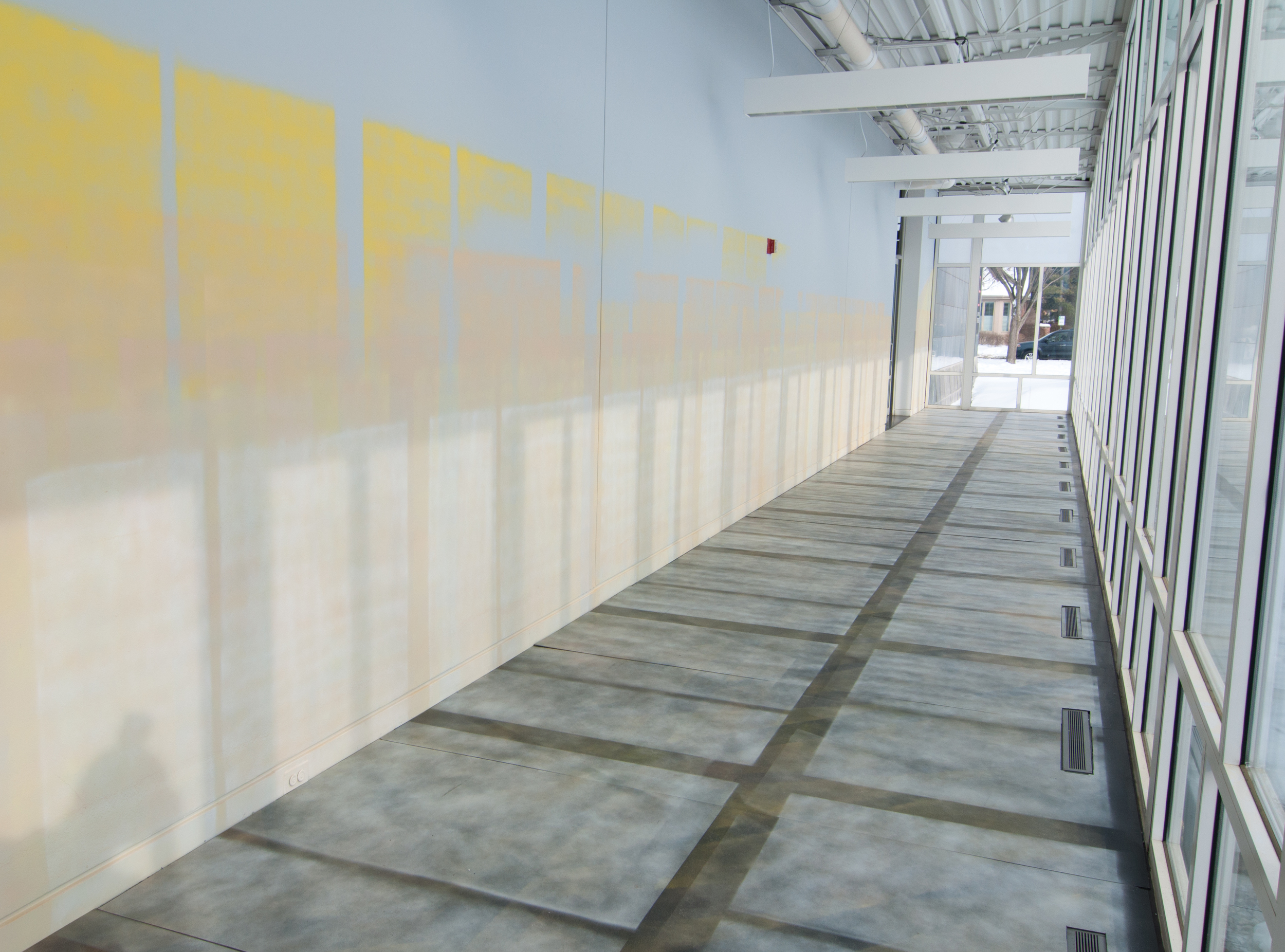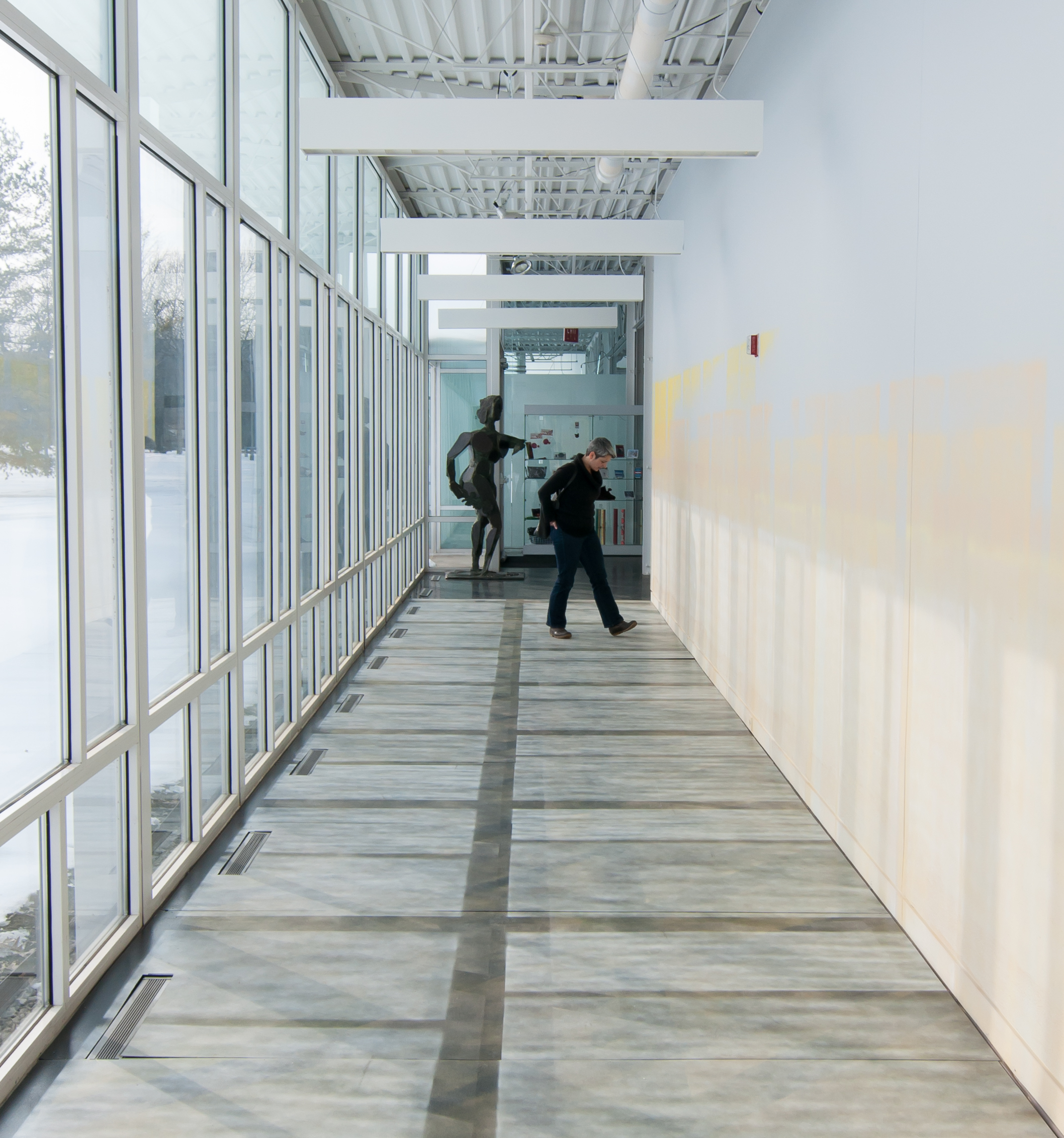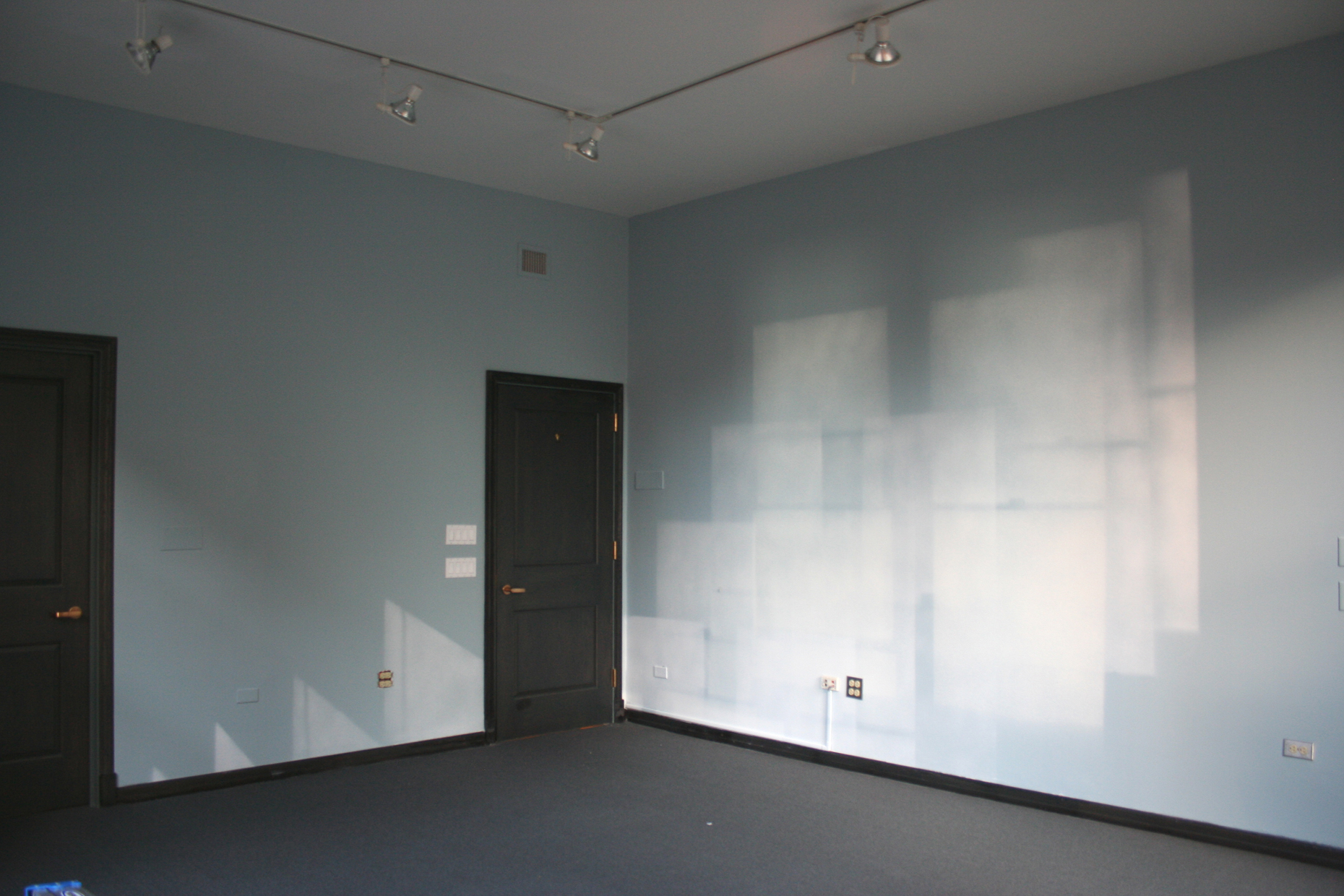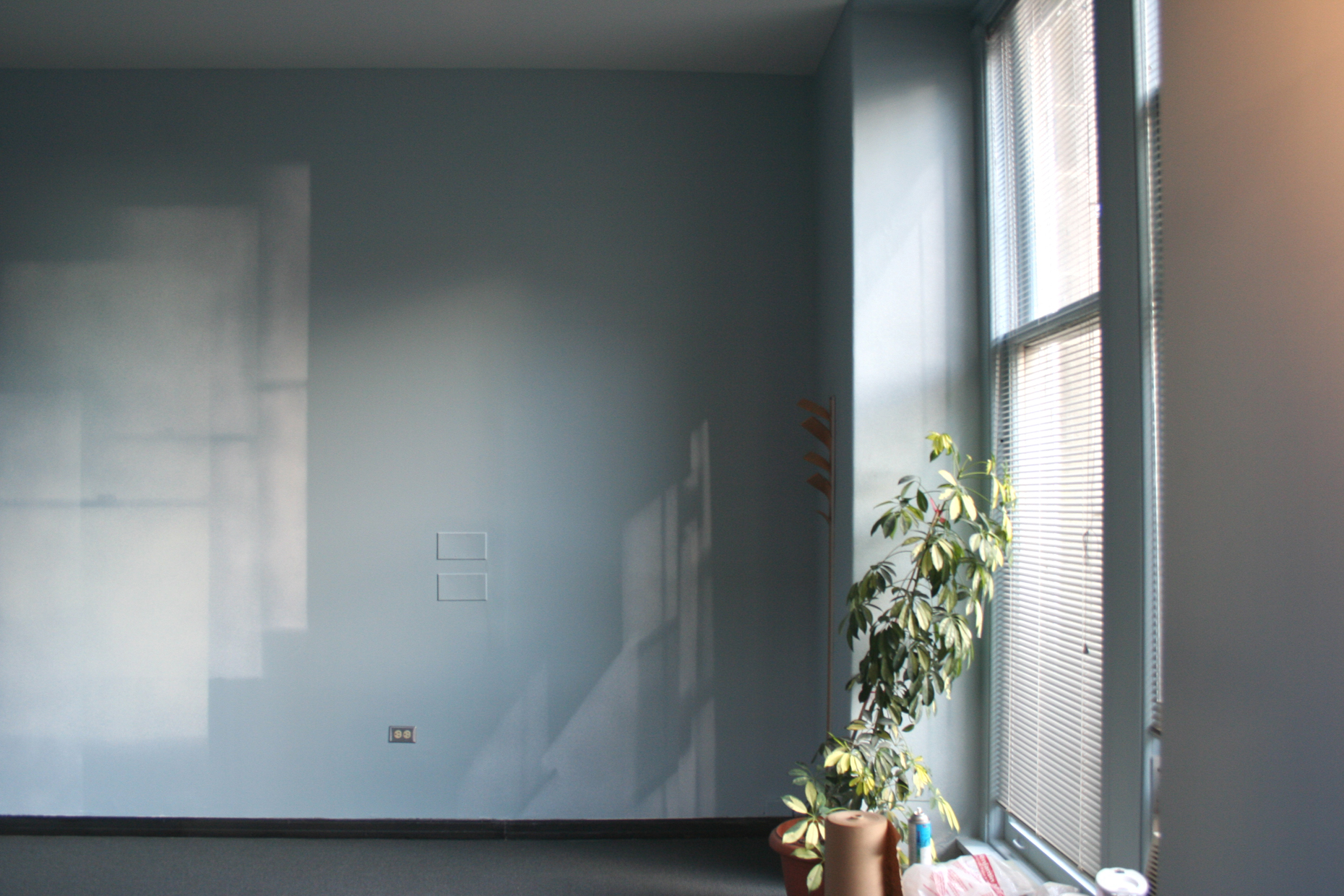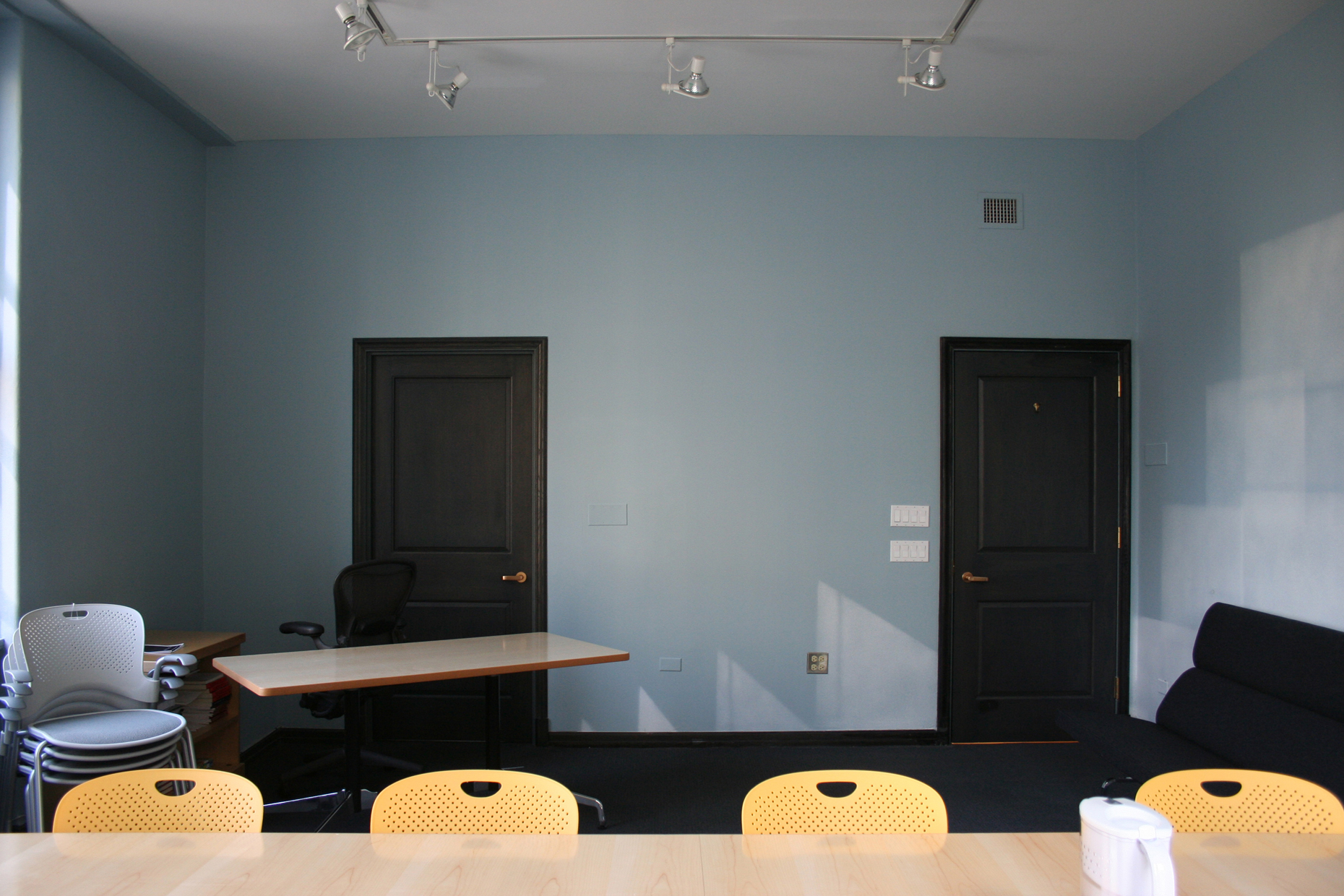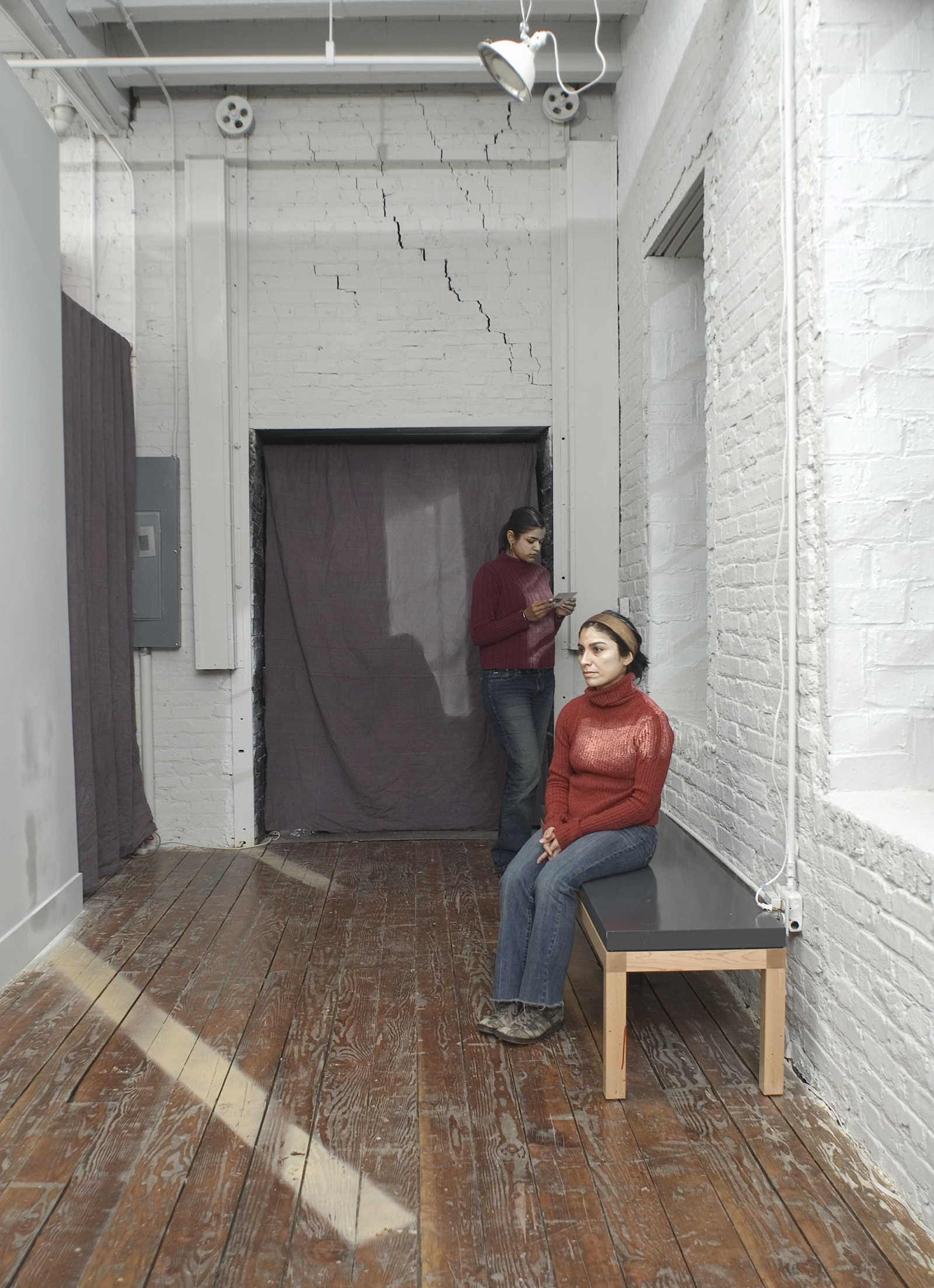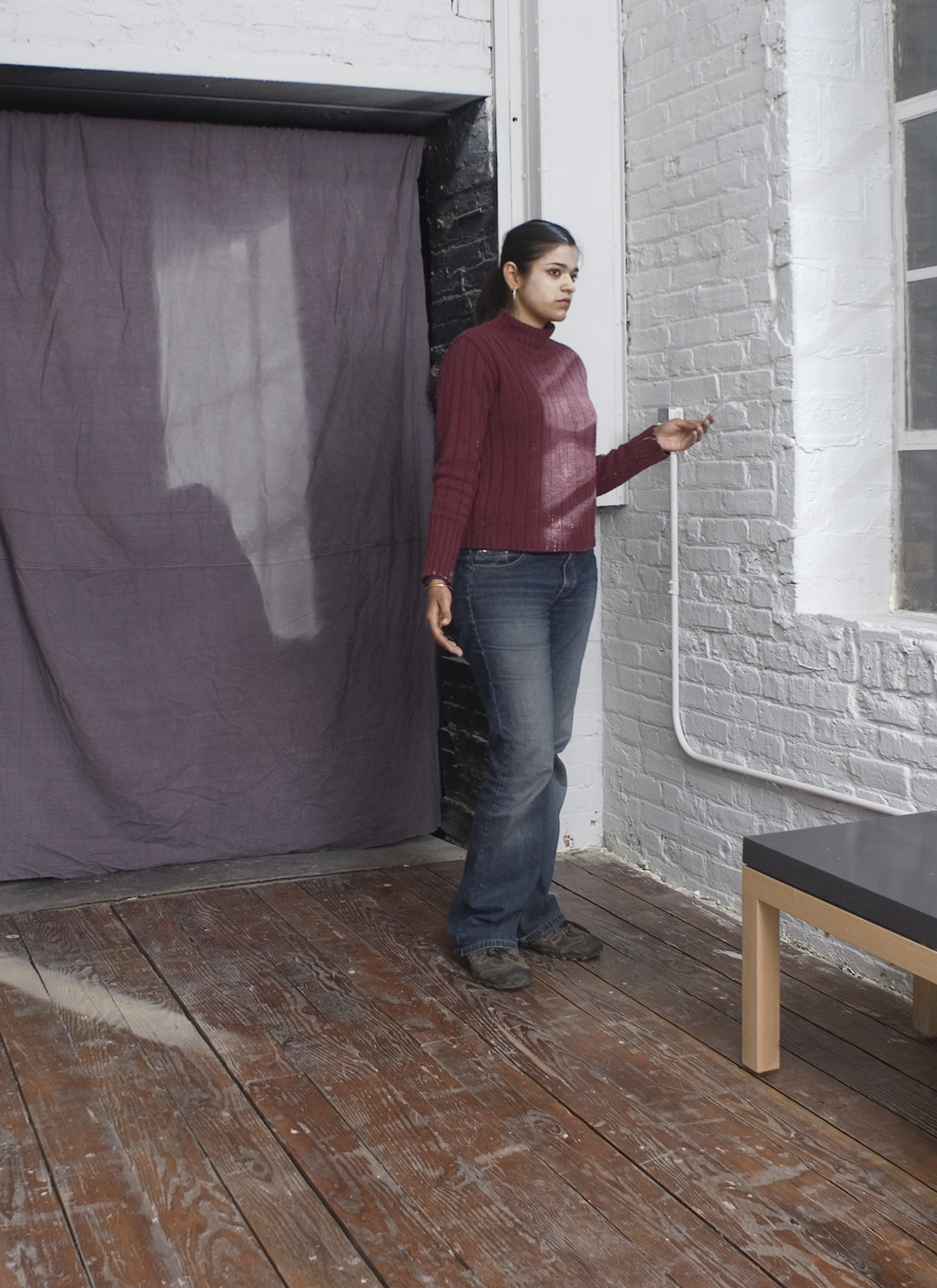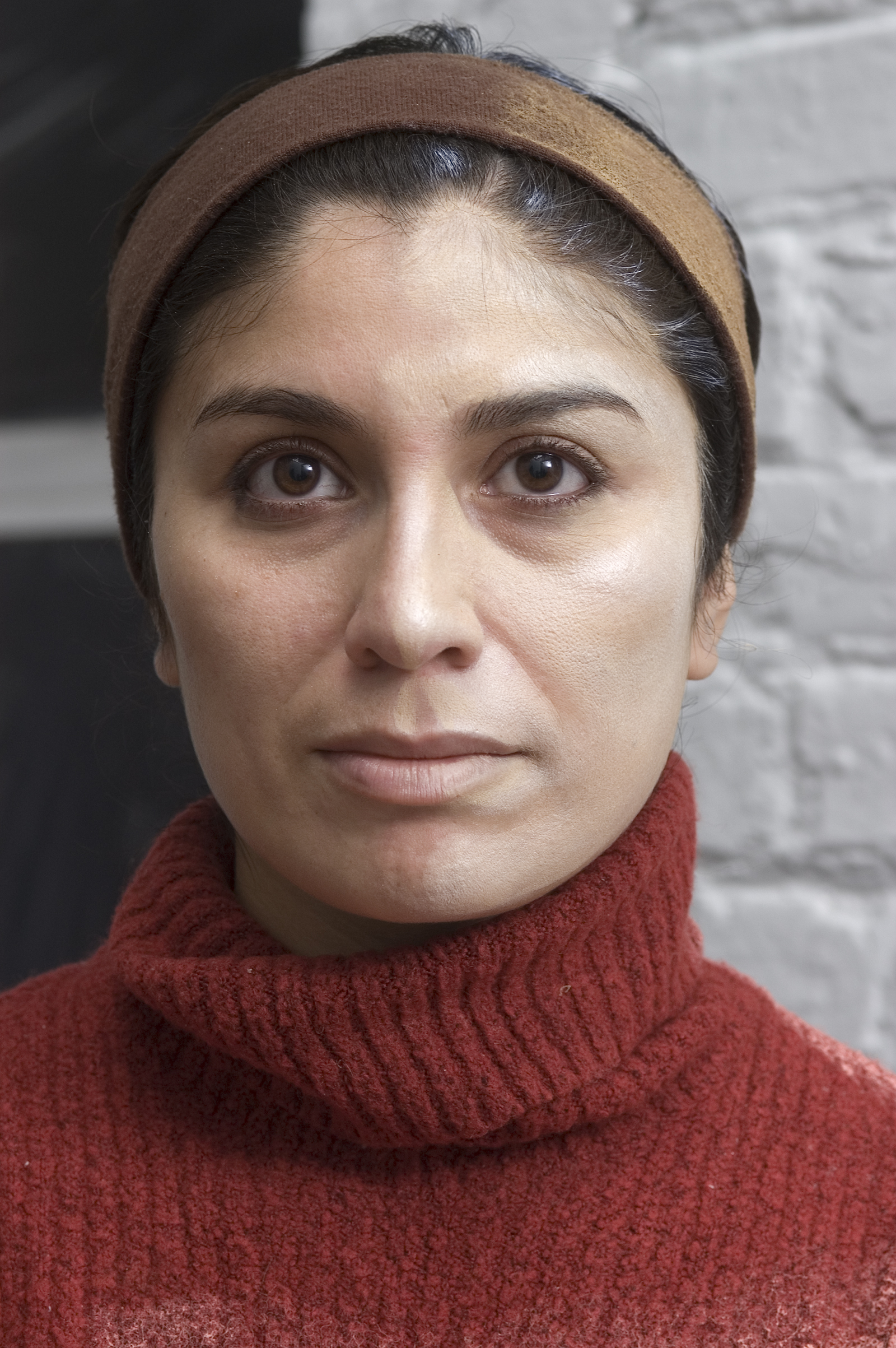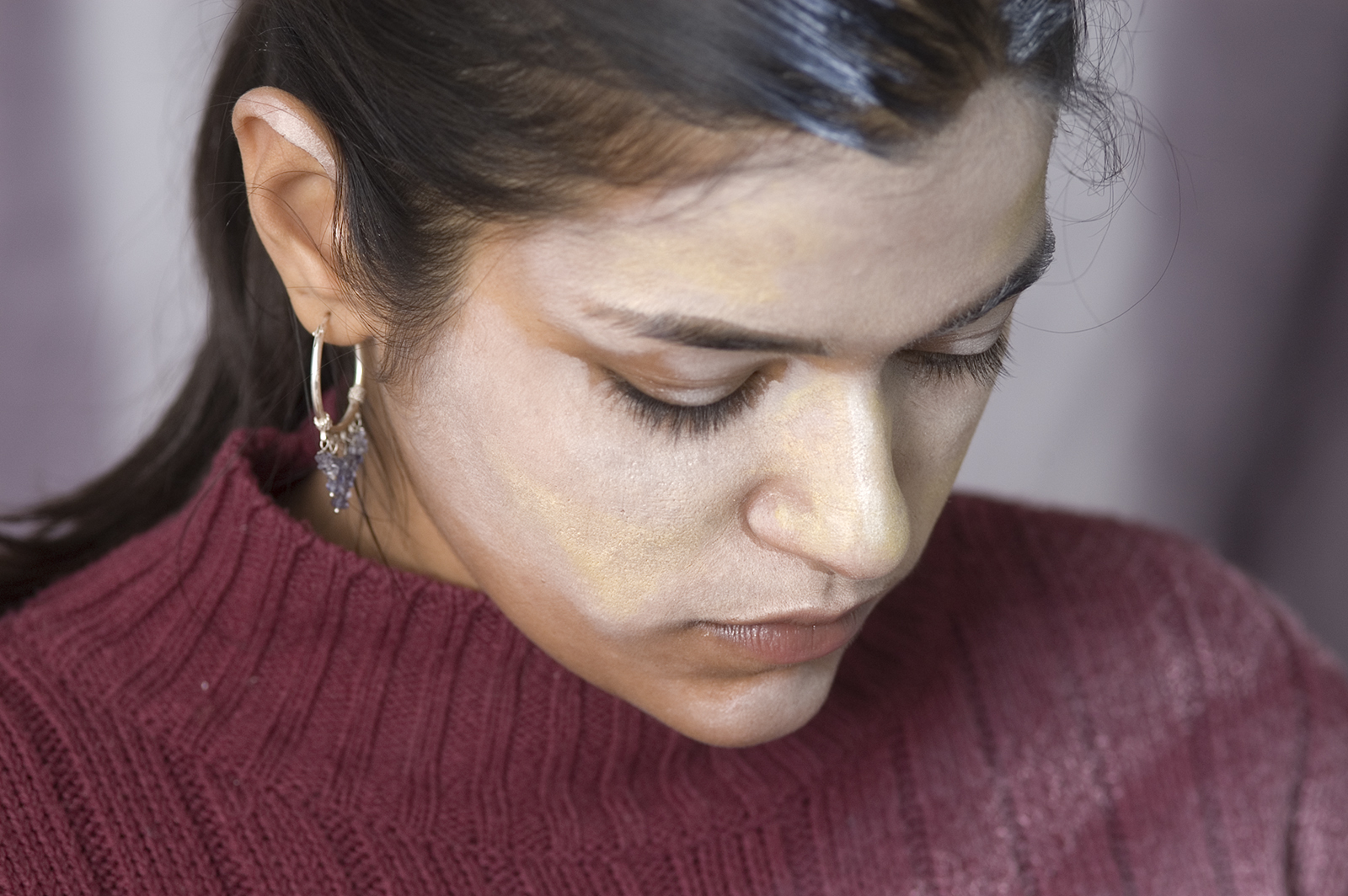SITE SPECIFIC
2016 (In Progress) — roof height about 20'; space 50' x 38'
will ultimately include 116 names laser cut into paper & mounted
into ready-made frames; 58 names currently installed.
Eclipse
2015 — dimensions variable (main gallery wall height 10' 11")
main gallery: interior latex and spray paint on walls and ceiling
and on stained birch plywood panels over existing gallery floor
smaller gallery: interior latex and spray paint on walls and ceiling,
and two channel video installation projected on baseboards
Crescent
Photographs by Rachel Herman
Synopsis
2015 — dimensions variable (projected images are life-sized)
projected still images and spray paint on floor
still images used in piece photographed by Rachel Herman
Photographs by Clare Britt
Winter Azimuth
2014 — corridor 61.5' long x 8' wide; wall height 11' 11"
interior latex and spray paint on mdf (installed over floor) and wall
Photographs by Michael Soto
Analemma
2013 — wall height 11'3"; wall facing viewer 19'8" across
interior latex and spray paint on wall
site specific installation for HairPin Art Center
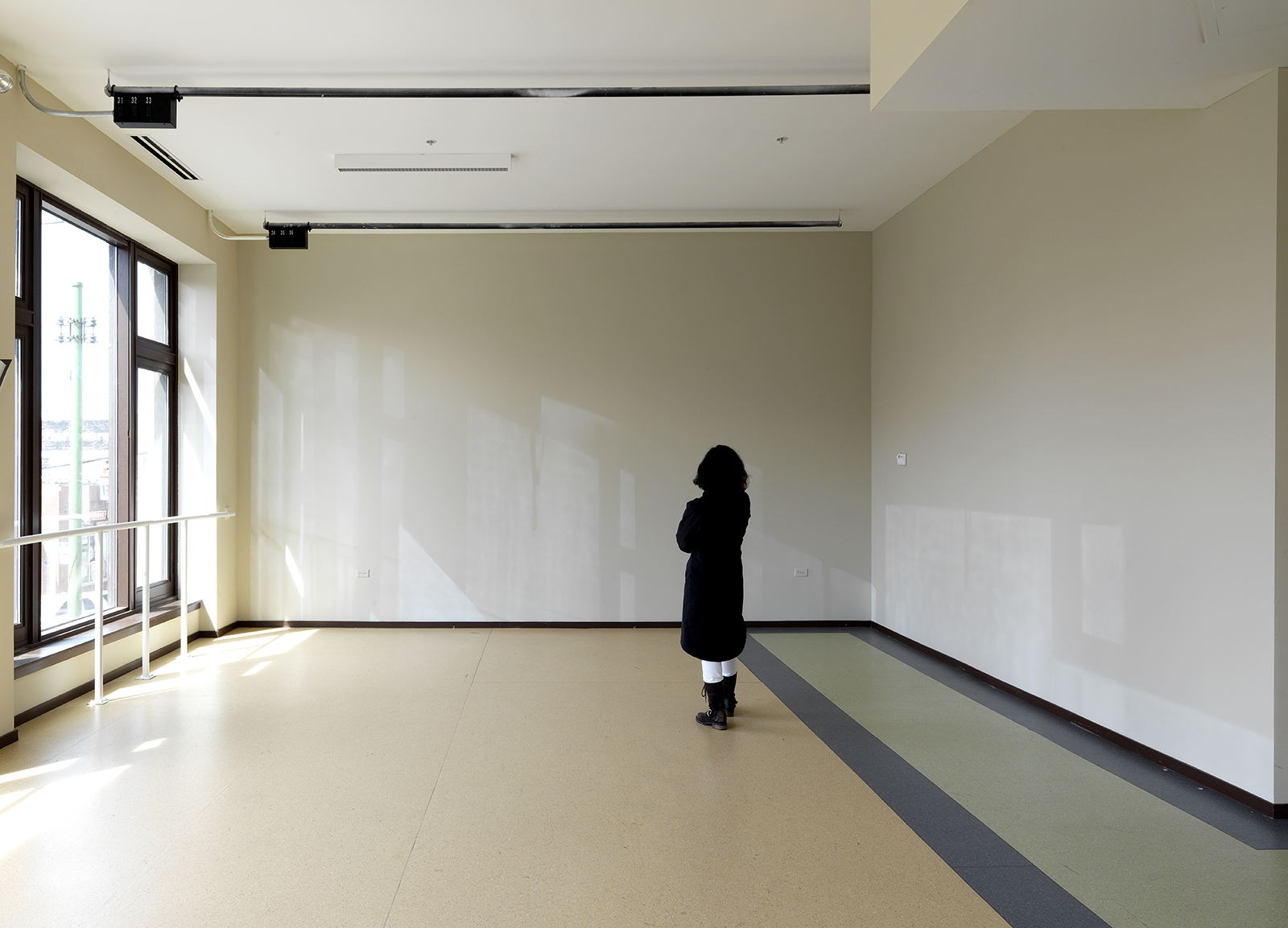
Photograph by Tom Van Eynde
Moving in Place
2008 — wall height 9'10"
interior latex and spray paint on walls
commissioned installation for the office of the Dean,
Columbia University School of the Arts
Luminaries
2007 — dimensions variable
interior latex and spray paint on floor, walls and ceiling; fabric dye on canvas; fabric and cosmetic pigments on Sumakshi Singh and Gisela Insuaste
Photographs by David Ettinger
